Nurturing minds and building commuities
A Belle West teacher tells of the journey of the community as well as her own
Headtecaher of the Belle West Primary School, Parbatie Allie (Samuel Maughn Photo)



A Belle West teacher tells of the journey of the community as well as her own
Headtecaher of the Belle West Primary School, Parbatie Allie (Samuel Maughn Photo)


TRICHRIA Richards may not have won in the last Local Government Elections when she switched from A Partnership for National Unity (APNU) to the People’s Progressive Party (PPP), but a single day barely goes by without people in her community – Laing Avenue, West Ruimveldt, where she grew up – going to her for help with various matters.
They know her more than they know the elected councillor, and they are able to receive help even though she may not exactly be serving in a government position. The vibrant 33-year-old has always been up for any kind of work that would make her community a better place, and that would improve lives.
In fact, this is the reason she got into politics in the first place. She’d always be doing some sort of community work back in the day and even formulated a small group to get things done, hosting fundraisers and approaching others for help to finance such initiatives.
But after a while, it became taxing, especially when

it came to raising money for these projects, so when the opportunity came to run in the Local Government Elections, she jumped on it.
“Persons recruited me to run for local government and I ran on the basis of getting more help; I found that I really liked it,” Richards shared with Pepperpot Magazine on Friday.
She spent about seven years with APNU, but after a while, she realised that she was not very in tune with what was happening, and she started drifting; she’d participate less and less when she found that she did not like what was happening.
“When I decided to leave APNU, I resigned and I was asked to run for the PPP



and I said yes. When the news came out, it was more of an uproar on social media than it was in the community,” she recalled. Although people did not appreciate this in the beginning, they eventually came around to the idea, especially when they could see positive things happening.
To Trichria, it was more about serving and helping the community than it was about politics. She just couldn’t ignore the progress she saw taking place and felt she wanted to be a part of it.
“I have always had a passion for wanting to develop our community and wanting to give back. I can’t sit idly by and see things happening and can’t be a part of it, or change it, or help,” she expressed, adding, “I saw the different developmental things that the president was doing and I wanted to be a part of it…so even though I didn’t win, I am still happy that I can make an input and help.”
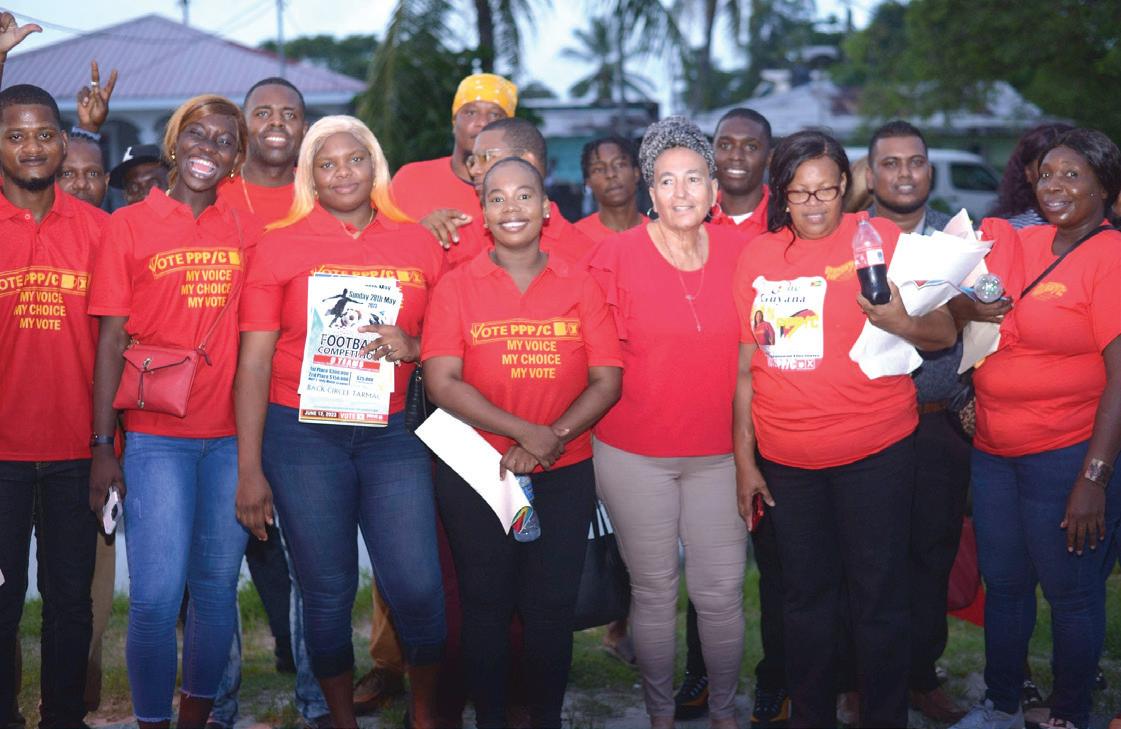
As she engages in community development on behalf of the government, Trichria is happy that support has been forthcoming. “The Vice
SEE PAGE XIV

‘You have to be half crazy to ride’- Guyanese
ONE of the many appeals of sports is the adrenaline it produces. Many people live for the fast-paced nature of everything moving swiftly around a track or across a field. Racing is normally different. Racers set out around a track at hundreds of miles per hour, barely making turns and narrowly avoiding collisions. Racers in Guyana are no different. Professional racing is a growing sport in Guyana, with more young men and women joining the field. Adrian Mohar is a young bike racer from the Yarrowkabra community. Adrian is part of a newer generation of racers. Growing up with dirt bikes, Adrian and his comrades are pioneers in their field. And although they are new, they bring fresh excitement to an old sport, pushing new boundaries.
Thirty-one-year-old Adrian Mohar wears many hats. Most days, he can be found at his Yarrowkabra home, working on bikes or helping the community in any way possible. However, on the weekends, Adrian puts down the tools, picks up one of his many bikes, and takes to the track.
He and his team can be found circling the South Dakota track for hours on end. Adrian grew up surrounded by racing; his father and grandfather were both racers and taking up the sport professionally was something he had considered for a long time. He shared that, “My grandfather used to drag race in the 60s, on the roadways, not legally. And my family has a very mechanical background. I, myself, am a mechanic. My father and brother


are mechanics. And they used to come up in the eighties to ride for fun. My dad got into racing in the early 2000s. He raced officially for the first time in 2004, and he got second place.”
The generational aspect of racing is vital to Adrian and the entire spirit of racing. He began racing in 2015. Still young, Adrian was not quite sure he was ready to enter professional racing at the competitive level. One year later, life gave him a stumbling block. “I started to practise in late 2015; I did not think I was ready yet. In early 2016, I got into an accident, and that set me back a couple of years. I decided just the other day to pick it back up. With the guidance of my father, I started to ride again,” he explained.
As much as he had the full rallying support of his family, Adrian’s first steps into racing were on shaky feet. Perhaps it was self-doubt, but Adrian reentered racing, unsure about his future in the field. He admitted that he wanted to push his boundaries in order to see his true potential. He shared that, “My father has been behind racing and bikes the whole time.
sand. Before there was racing, Adrian said there was dirt bike riding, days spent covering miles of Guyana’s backlands from one place to the next. As he shared, “We used to do a lot of dirt bike riding, a few of us actually used to ride with Team Mohammed’s. We would ride and go to different places, like St Cuthbert’s Mission, Ituni, Coomacka, and Rockstone.”
Racing is exhilarating; the speed and spot-on coordination it requires are unparalleled. Adrian describes it as seeing the road rush towards you. He shared that, “It is very thrilling. You have to be half
I have always known I like racing and everybody thinks they have talent until they test themselves. I went into it not very exaggerated. I went in with one foot out the door to see if I really have what it takes to ride out there.” Since reentering racing, Adrian has made significant improvements. His skills have developed, and he is now more certain than ever that racing is a risk he is willing to take.
Biking is also Adrian’s preferred way of travel in his everyday life. Raised in Yarrowkabra, bikes were the best way to make it through the thick, hot
crazy to ride. It’s like stopping and seeing the road come rushing towards you. Being in a vehicle that is very powerful and the road is coming right at you.” As much as his initial steps into racing were not his most certain ones, Adrian is very sure about his love for the sport. As he shared, “The love for racing is something that does not go away. If everything goes well and I am at the point where I can no longer race bikes, then I hope to get into cars.”
Fueuling the future.
Adrian has his sights set on the next generation of racers. He hopes to develop the sport into what he knows it has the potential to become. As he gears up for the GMRSC championship opening round this Sunday, he rides with the future of racing as his inspiration. He states that, “My father paved the way for me, and I want to pave the way for my daughters. The eldest one has actually been riding for a few years since she was five. I want to pave the way not only for my kids but for a lot of cousins and kids. Everybody is just waiting to see what is the outcome.”

GUYANA-BORN Canadian poet, writer and community leader Janet Naidu recently launched her fourth poetry collection, River Crossing, in Toronto, Canada. The event was held at the Island Junction Restaurant in Toronto, and began in the early afternoon of Sunday, April 14.
Under the leadership of Adit Kumar of the Vedic Cultural Centre as Emcee, who guided the programme, the attendees attentively enjoyed the diversity of the poems that were read at the launch.
Naidu commenced the readings with some of her poems, “One Day in Our Journey”, “Annapurani, Pati”, and “Still Holding On,” followed by readings from her collection by Ray Williams, short-story writer and emerging poet as well as Peter Jailall, poet and educator, all of whom are members of the Pakaraima Writers Association in Toronto, a group that Naidu founded in 2005
to bring writers together as a support group.
According to Naidu, she was pleased that both Williams and Jailall could participate in the readings of her poems at the launch. Ray Williams read two poems, “The Fence” and “The Weight on my Chest” and Jailall read two poems, “Refugee” and “Queen Bee”. One poem, “Locked Away”, was read by Peter Deboran, educator and community activist.
Naidu wrapped up the readings with one final poem, “You Speak Good English”. Attendees mingled with one another, enjoying an afternoon of literature in the Guyanese-Canadian community while obtaining a copy of the book at the author’s book-signing table.
About Janet
Born in Covent Garden, East Bank Demerara, Naidu immigrated to Canada in 1975. Her first collection

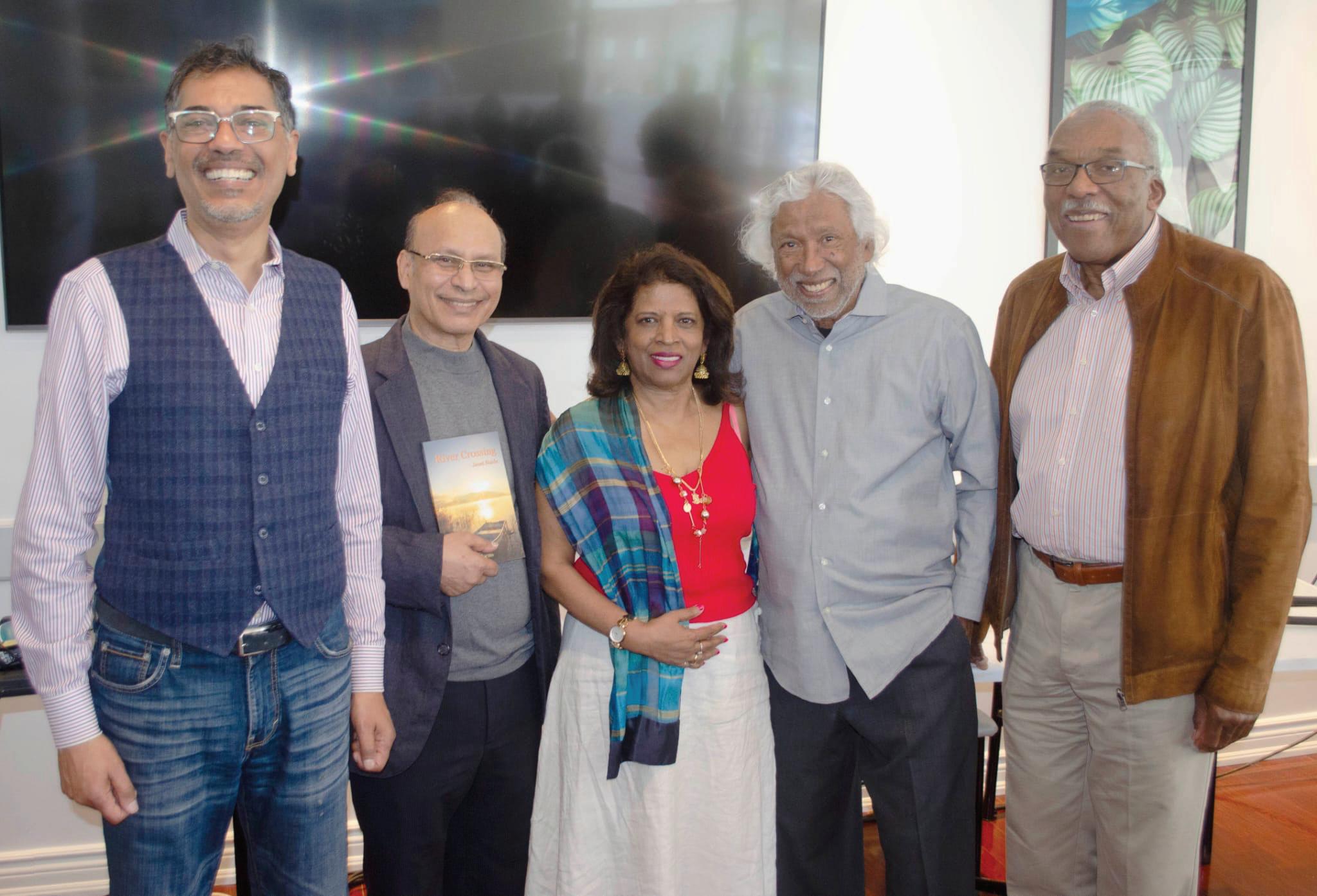

of poems, Winged Heart (Greenheart, 1999), was shortlisted for the Guyana Prize for Literature in the poetry category in 2000. Her other two poetry collections include Rainwater (2005 & 2023) and Sacred Silence (2009). Her poems capture themes of ancestral heritage, migration, uprooted movements, resettlement, resilience and survival. She disclosed that she has been working progressively on this new collection for over a decade.
Naidu pointed out that she was encouraged to write poems by the late Rajkumari Singh, who had a passion for literary creations and was an accomplished writer, dramatist, poet, and public literary and social figure in Guyana. She boasted that “Singh created a space in her home on Lamaha Street in the 1970s for young and emerging writers, poets, dramatists, dance performers, artists - Rooplall Monar, Mahadai Das, Henry Mootoo, Gushka, Elfreida Bissember, Gora Singh, among others.”
According to Naidu, who is also the current President of the Guyanese Canadian for Unity (GCU), during
that period she was developing her writing and was avidly writing to “pen pals” around the world about life in Guyana.
Naidu developed her creative writing and felt privileged to have been part of Rajkumari’s environment, where her deeper imagination began to take root through the late writer who encouraged her to write a couple of poems for the Heritage booklet, published in 1973.
According to Naidu, even though she was busy establishing herself in her new home when she migrated to Toronto, she still harboured nostalgia about Guyana, especially the village people and the sugarcane fields near Covent Garden and surrounding areas where she grew up. “Writing poems was a way in which I found solace. I continued to write and managed to publish earlier collections of poems.”
Janet got involved in the Guyanese community, and apart from her leadership roles in community organisations, she continues to be involved in the writing group, where she finds the support of other writers and poets to be a great source of
nourishment.
River Crossing contains 54 poems, capturing themes of cultural connection with her beloved Guyana and reflections of life in Canada. The collection has voices of diverse experiences of struggles, the quest for equality and overcoming barriers. She also delves into ancestral heritage and synthesises history, culture and memories.
Attendees at the launch obtained copies of the book, which is also available on Amazon.
Janet’s poetry and writings have appeared in news media, online publications, and anthologies, referenced in books on Indo-Caribbean themes and in the Women’s Journal of the University of the West Indies.
Naidu has a BA in Political Science and Caribbean Studies from the University of Toronto and a Bachelor of Laws (LLB) from the University of London, UK. Having completed her legal education later in life, Janet is not a practising lawyer; she has utilised her legal education to teach legal courses in the subject area of hospitality and tourism at the George Brown College in Toronto.
Following the publication of the August 13, 2023 story titled, “The act of brotherly love” in the Guyana Chronicle, almost one year later, the Pepperpot Magazine decided to check in on Savita Ramchand, who has been bedridden since birth due to brain damage and her lone caregiver, her brother, Kishan Ramchand.
ing conditions have significantly improved due to the unnamed donor’s contribution. They have a spanking new washroom facility in the form of a modern toilet and bathroom, which are fully tiled with ceilings and a brand-new cupboard for the sink.
of disposable pampers for his sister from several persons and organisations and he is very grateful since it saved him from buying.
Finding the perfect job
However, for the past few weeks, Kishan has been unable to work. He is getting employment but far from his home. He cannot go very far from home since he uses his bicycle to go home during
before she passed away. She did everything possible to make life a little better for Savita, and before she died, she made him promise to take care of his sister, so he wants to honour that responsibility bestowed upon him.
he said.
Being mentally and physically challenged, Savita cannot walk or talk and is bedridden, unable to do anything for herself.

doesn’t chew, only swallows, and spoon-feeding is a time-consuming task.

According to Kishan, since the publication of their story, an overseas-based Guyanese read it and was moved to tears and felt compelled to do something for these siblings. The donor was especially pleased with Kishan’s never-ending dedication and love for his sibling, who is completely dependent on him. He related that their liv-
Kishan reported that he and his sister would like to thank the donor and are very pleased with the support. He added that the washroom facilities are updated with all amenities, and it is indoors, making it very convenient for them to utilise. Kishan explained that he had a sink, but no kitchen cupboard and that too was added, and he is making full use of it.
In addition, he told the Pepperpot Magazine that he has also received donations
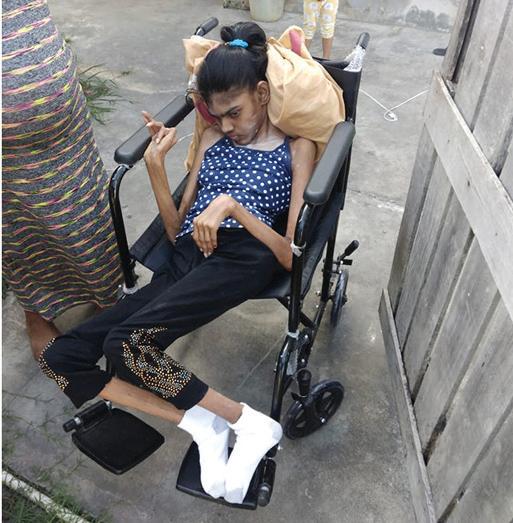
lunchtime to take care of his sister, including changing pampers and feeding her lunch before returning to work. Kishan is a construction worker and is currently trying to gain employment close to his home so he can multi-task and his sister can receive the care she needs.
The 32-year-old told the Pepperpot Magazine that after his mother passed away five years ago, he was automatically tasked with caring for his sister, Savita, 33.
“Once I can work, things will be alright. Whatever little I can do, I will provide for myself and sister and I am very happy about the help we got though it assisted me significantly and I am thankful,” he said.
Kishan and his ailing sister reside at a family-owned house in Groenveldt, West Coast Demerara, where they have a small apartment. Despite the challenges of caring for his sister and working, Kishan said he has been successful in managing all chores and meal preparations daily.
He explained that since birth, his mother took care of her, being the firstborn
Kishan said he is taking his responsibility seriously, and even now, he has not opted to get married or date.
“I want to be able to take care of my sister to the last and perhaps then I will decide what I can do with my life,”
Kishan reported that his sister’s diet is unlike his, and he has to ensure she gets the proper nutrition required for optimum health.
Meal prepping and feeding takes time since all foods have to be liquids or in a paste form because Savita
“It’s not easy, but I am trying to do my best and being solo is hard. I have to get up early and start my day. There are no day-offs or anything like that,” he said.
Kishan’s father died in 2000, and he has two broth-
SEE PAGE XV

BELLE WEST is a charming community with deep roots and a rich tapestry of people and past. The ever-growing community has become a well-known place along the West Bank where it can be found. The village resembles a quaint suburban neighbourhood with its quiet streets and walkways; Belle West exudes a peaceful, cozy atmosphere. Today, the village’s population is estimated to be in the thousands. Although located several miles along the West Bank of the Demerara River, Belle West has seen tremendous changes in recent years.
With its biggest population hike, overcrowding has become a concern in the village, leading to the development of Belle West Phase 2, the most recent addition to the already sizable neighbourhood. But Belle West is more than a housing scheme; it is home to peaceful and creative people. With streets lined with as many business endeavours as historical significance, Belle West stands
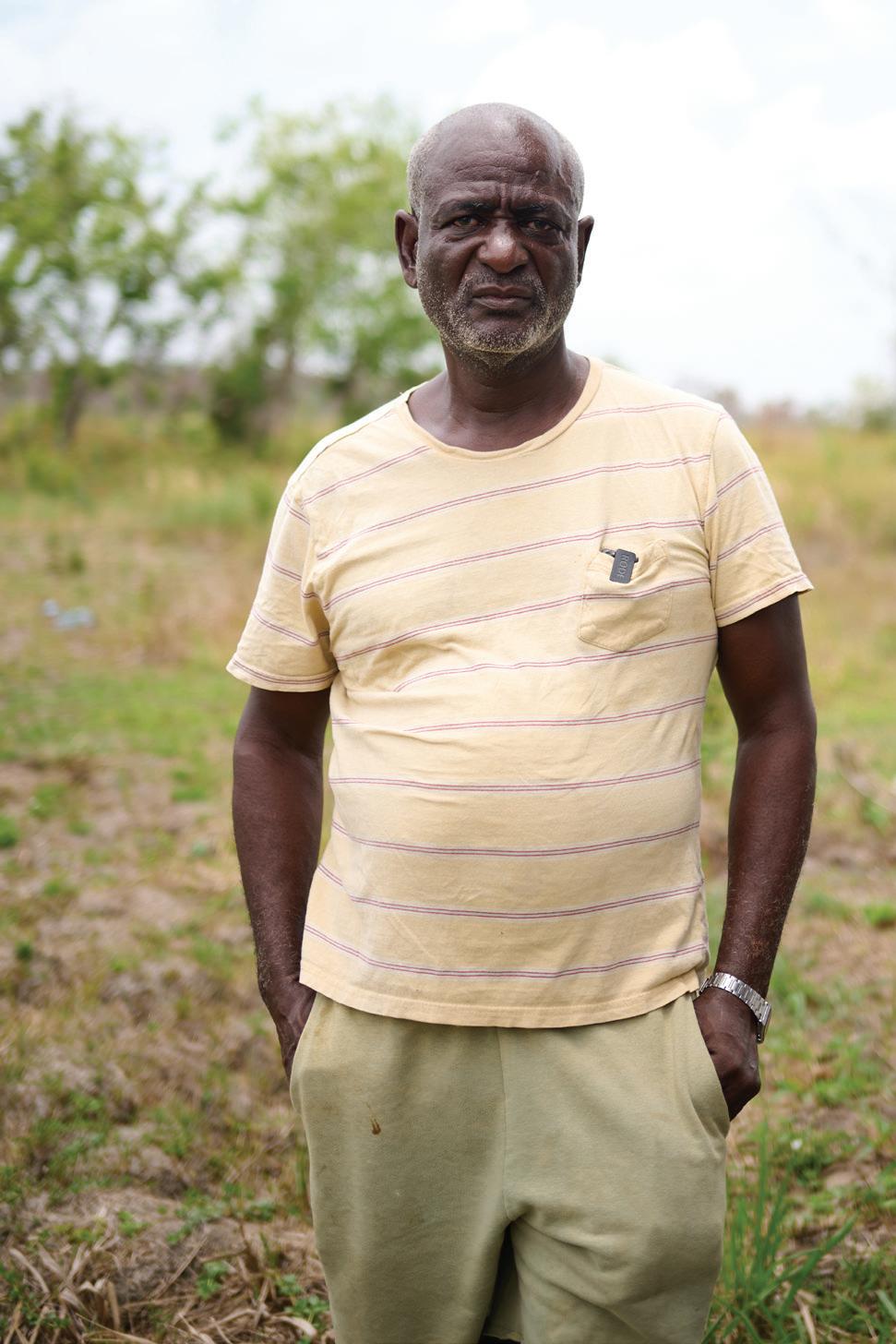
out amongst its counterparts as a unique and blossoming community.
Regarding location, Belle West is found deep within Canal No. 2 polder. Equally

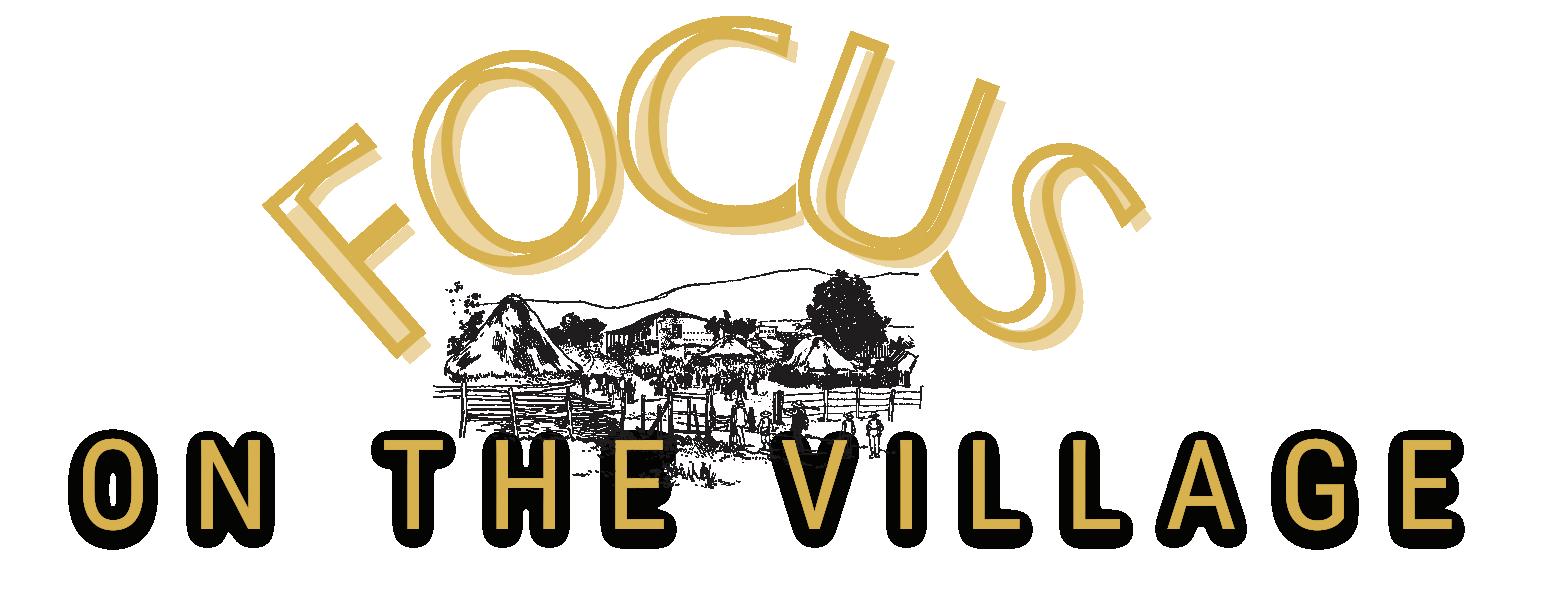
famous villages like Endeavour are neighbours to Belle West, and the trio of communities share a similar history; today they share many of the people and economic endeavours. Historically, Belle West was known to be a community predominantly made up of Indo-Guyanese. This is a factor that seems to be changing. Today, Belle West is a melting pot mirroring the multicultural nature of our country.
The village’s past is something they hold in great regard. Today, most of the community’s people venture beyond the bounds of the

The Belle West factory was an economic stronghold of the community, and people were venturing from far and wide in search of work among the clay bricks. Many of these people never left Belle West but rather settled in the foundation created by the factory and the community.
On the other hand, Godfrey Bess is a son of the Belle West soil. Born and raised in the community, he said the factory’s legacy is a part of Belle West’s history that will remain. “Belle West is a village that really began with the factory. The community
Bank. Although not functioning currently, Godfrey believes that with some development and a facelift, the resort could return to its former glory.
A contractor by trade, Godfrey still has a profound love for his community. His forebears were said to be the first settlers in the village, long before the factory when Belle West was merely grasslands flourishing on clay lands. “Growing up in this area, it was very bushy at that time. My grandmother had twenty-one children. So you would find that during the August holiday, over 30 to
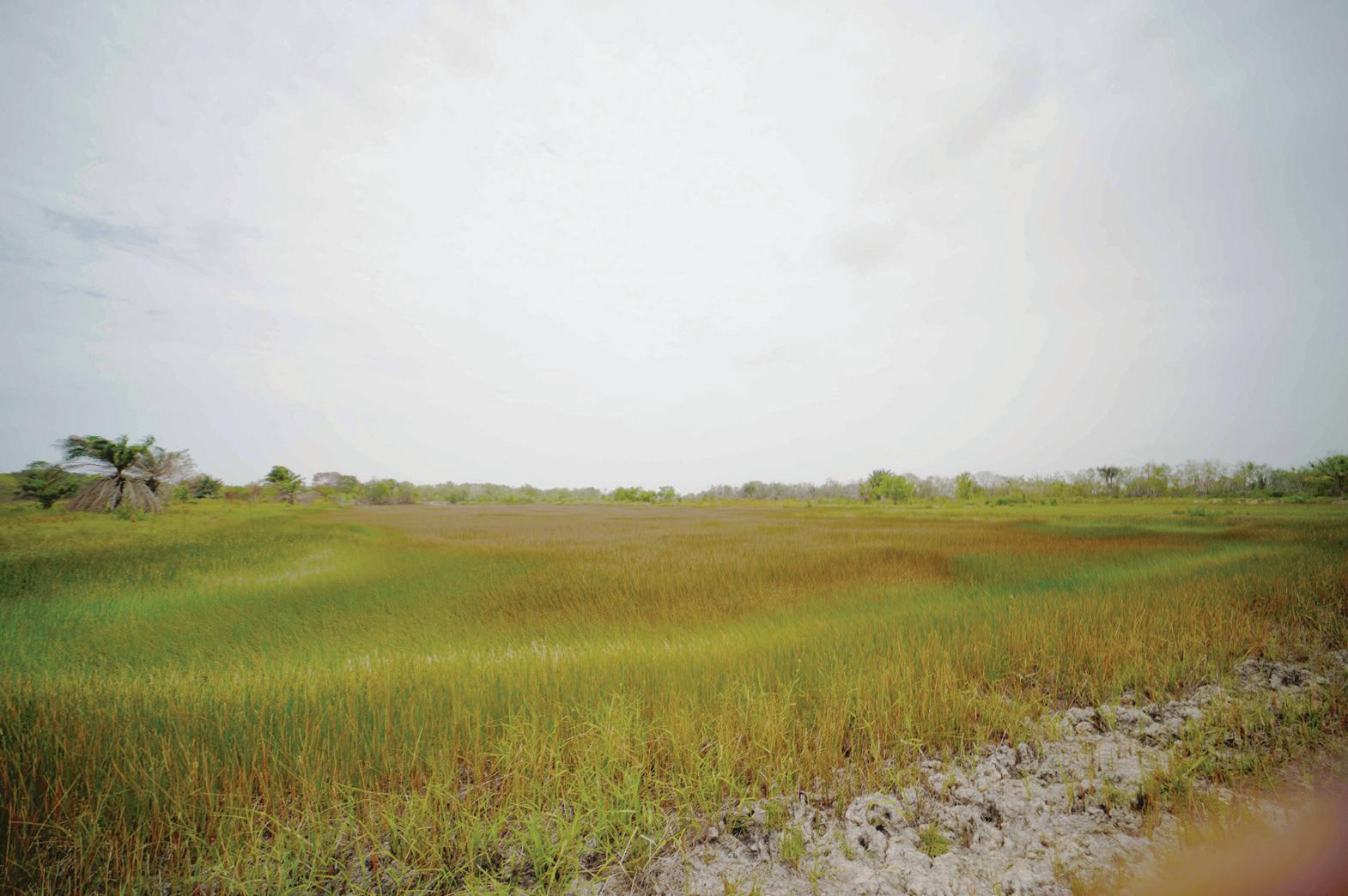
community for work. With a plethora of small businesses, the village is home to many entrepreneurs and professionals. More than 30 years ago, however, Belle West was the industrial hub of the West Bank.
The history behind Clay Brick Road
Perhaps the most popular street in Belle West is the famous Clay Brick Road. A single road in the community, remnants of its history, lay within the very ground as the street is lined with red clay bricks. The name and history are derived from the clay brick factory once housed in the housing scheme. Among the largest industrial operations of its time, many people sought work at the factory.
was developed after the factory. There were a lot of jobs created.”
Godfrey and his family lived just off the factory. In the factory’s days of glory, the vast industrial clay mining and brick production were sights to behold, and it was seen as one of the biggest mining companies in the region. The far end of the West Bank has clay in abundance. The Belle West factory and people mined this clay in great quantities for many years, and its impact can still be seen today. “The factory has created a pond that is used as the Blue Water Resort that has been around for 12 years,” he said. Godfrey and his family are proprietors of the famed Blue Water Resort of the West
50 grandchildren would meet here. Because my mother and others had moved to other communities, time after time, we could come back and gather here,” he said.
To Godfrey and his family, the history of Belle West and the surrounding area are family history. When a family puts down roots so strong in a community and sees it grow with their lineage, the village is bound to become a part of them. Today, Godfrey is on a new mission. He aims to restore the resort. He is sure that with a little time and effort, Belle West’s beauty could be displayed to the rest of Guyana for what it truly is: a beautiful and warm community, home to a rich history and amazing people.
KELLY Ann Jeremiah’s story began deep within the Canje River of Berbice, where she was raised, surrounded by nature and all the old-fashioned necessities of life. Her first major adjustment was moving away from home. Although she cited the change as one of the first real shifts in her life, Kelly has long been a pioneer in adapting to change. This took on an entirely new meaning with the birth of her first child.
Still in the honeymoon phase of her relationship with her then-boyfriend, an 18-year-old Kelly discovered she was pregnant. Nothing could have prepared her for the trials of motherhood, especially given the unique circumstances surrounding her pregnancy and her differently-abled daughter, Akeela. Today, Akeela is 14 years old, and both mother and daughter are learning to cope, or as Kelly puts it, ‘rolling with the punches’. She says that amid all the challenges, being a mother to any child just takes a little extra grace.
Kelly’s upbringing was reminiscent of the authentic
Guyanese parenting style, one that many people could relate to. Coming from the charming county of Berbice, she grew up among family with humble beginnings. Kelly says that her upbringing impacted her life in many ways. As she shared, “It was peaceful growing up in Berbice. We were not exposed. We grew up very respectful, disciplined, listening to our elders and neighbours. It was different.” Change is something that Kelly experienced very early on. She moved to the capital city of Georgetown when she was just seventeen years old, leaving behind a life where running along back dams and climbing trees were considered fast-paced for a place that fully encapsulates hustle, bustle, and distractions.
“I moved to town with my aunty when I was 16 or 17. I used to attend NATI in New Amsterdam, and I finished a year and a half there before my aunt decided we were moving to town for a different living and a new start,” she recalled. Amidst these changes, Kelly did achieve a new life, but her toughest battle was yet to be fought.
Kelly never intended to settle in the community of
Belle West, but a series of events led her there. She met her now-husband while living in Georgetown. The young couple met when they attended a mutual friend’s wedding. Kelly remembers their meeting as love at first sight, as she shared, “He actually sang for me the first night we met.” She added, “I met him in 2009. I got pregnant in 2010 with my first child. I was not living with him yet until I found out I was pregnant. I ended up coming over the river and never going back home.” It is not a decision she regrets, however. Kelly has made Belle West her home.
In 2010, 18-year-old Kelly could not have been happier to find out she was pregnant. The young mother was over the moon with the news and held a bold, hopeful idea of motherhood. However, her pregnancy was a rocky one.
Although she received the full support of both her husband and her family, there were some aspects of firsttime motherhood that she grappled with. “I didn’t know anything about pregnancy.
I used to vomit a lot; I was sick a lot,” she added, “I went through my pregnancy being sick. It affected my daughter, who is my first child.” As much as she struggled with finding her footing in motherhood, Kelly soon found out her daughter was born with cerebral palsy.
Her daughter, Akeela, was not diagnosed at birth but rather a few weeks later when her mother noticed her development was slower than that of children her age. As Kelly shared, “I was just glad that I got my daughter and she was born looking normal and everything.” She further added that when Akeela was six or seven months old, she discovered she had cerebral palsy. For Kelly, one of the hardest aspects of being a mother to a differently-abled child was
accepting her daughter’s diagnosis. She worked through it and has come to grips with her daughter’s uniqueness. She admits it was not easy, but it is a feat she encourages other mothers to confront.
As she shares, “I learned to accept it. Dealing with my child every day, I learned to accept her condition. I tried to find, in dealing with her, ways to understand her. I improvised ways of communicating with her.”
Both Kelly and her mother have made significant strides. Kelly has adapted entirely new ways of communicating with Akeela. She has worked towards creating a bond and relationship with her daughter. Today, at 14, Akeela can do more than she ever has, as Kelly stated, “I never heard ‘mama’ until my daughter was nine years old.
Then I actually heard her say ‘mama’ to me.”
Kelly is like so many mothers across Guyana and the rest of the world. As Akeela approaches 15, Kelly is happy with the development they both have undergone. She urges all parents of differently-abled children to find the individuality in their child, sharing that “For parents of children who are differently-abled, find time to bond with them. To discover the difference in them. Because even though they are different from other children, they are still able in their own way.” Today, Kelly is a mother of four children, with Akeela being the eldest.


IN recent times, Guyana and the world beyond have seen a boom in the number of gyms that line the city streets. Everywhere, people seem to be taking a far greater interest in their health and well-being. Guyana now has more fitness businesses than ever, each one unique and skilled in its own right. The community of Belle West is home to one of these notable fitness outlets. Owned by Shazeela Nazir, Funfit Zone is located in Belle West and has been lauded as more than a gym. Shazeela and her team are experts in what it means to exercise the
right way. On our trip to the community, we spoke to Shazeela about what it’s like to work in health and fitness, the reason behind mankind’s newfound appreciation of health, and whether it is all for the physique.
Shazeela Nazir and her family are driven by an entrepreneurial spirit. Hailing from the county of Berbice, Shazeela came from humble beginnings. Since leaving Black Bush Polder when she was young, Shazeela has made education her mission. Among her academic
endeavours are biology, education, and consultancy. Today, she is an entrepreneur, consultant, educator, and writer. However, her fitness centre in Belle West is among her bigger achievements. Funfit Zone stands out for many reasons. It takes a different approach to health and wellness and aims to encapsulate what it means to be well. As Shazeela stated, “It does help people, but the facility is there to focus on people who understand certain aspects of life…it’s like a self-assessment. Because what we cover is therapeutic exercise, we cover holistic medicine. We’re not
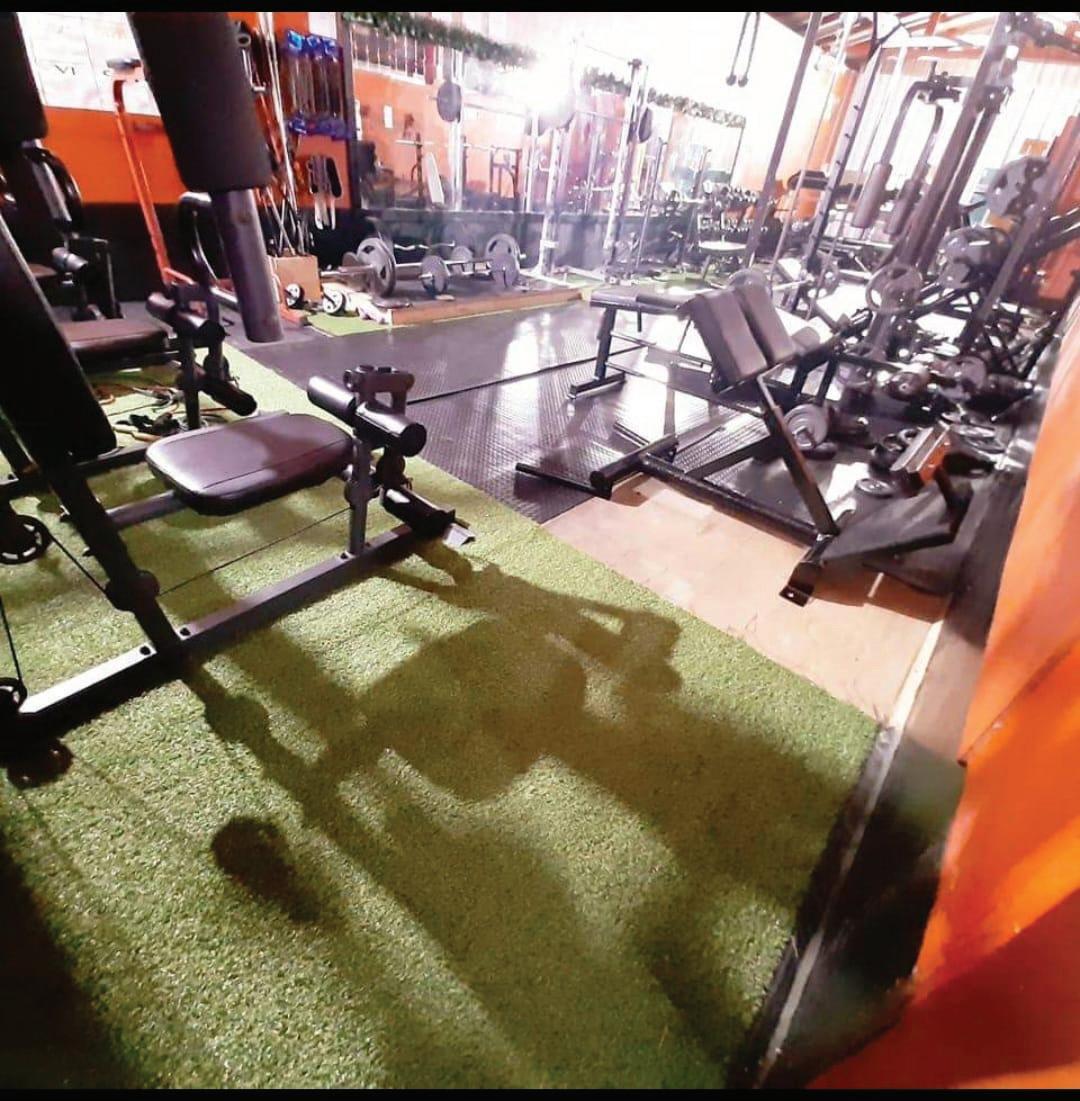
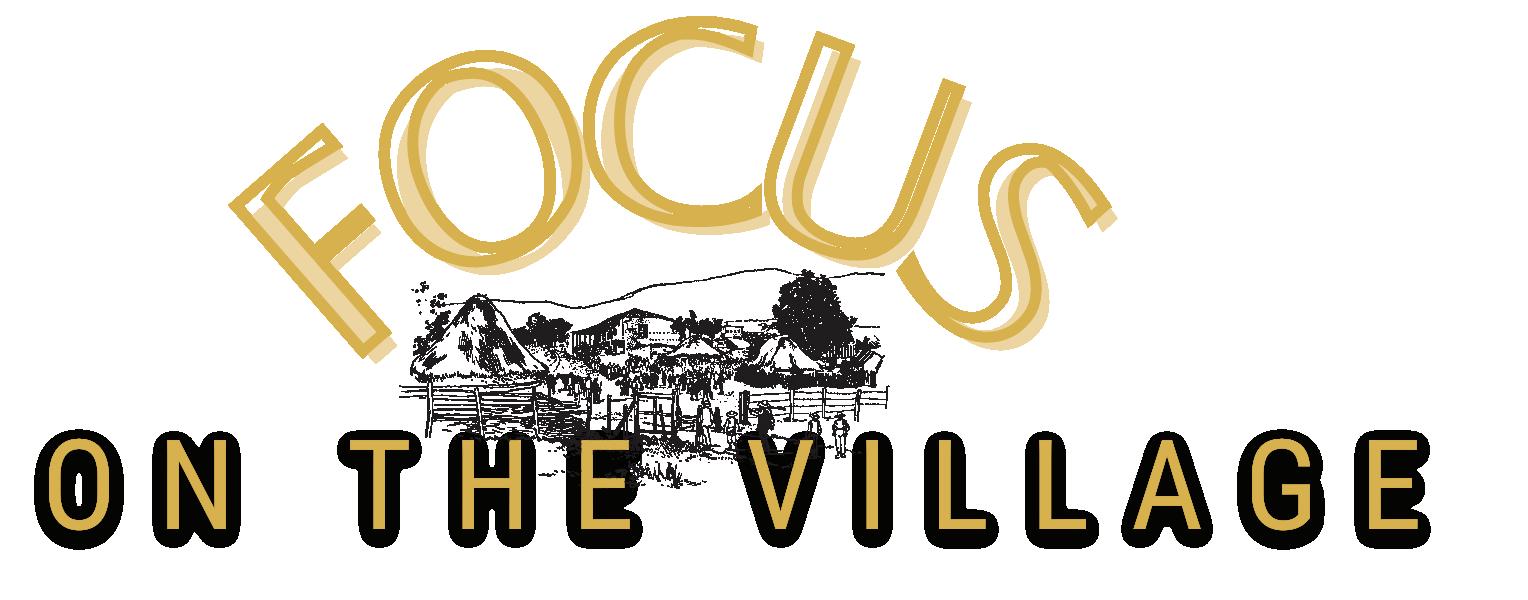

just a regular gym where you just put on machines, and you just come and work out. We go through a fitness checkup with you. We go through and see if you come in with joint problems, if you have knee problems, and we assess you and put you through that process.”
The Nazir family has called Belle West home for several years. Throughout the last couple of years, Shazeela says she has seen subtle but important improvements in the community, from infrastructure upgrades to new services. The Nazir family are also champions for their community. They have worked with the village to help the community in any way possible. Among their
attempts to help the community is their newest endeavour, an online Guyanese night school. The NASA School of Academics is a recently established school by the Nazir family. It aims to educate working Guyanese. As Shazeela stated, “The school is more to help, especially people from the community. Not just this community but Guyana throughout because it’s an online school. So when people from the community come to the facility and so on, the staff will educate them and tell them about it, so that they can get another opportunity. Just as how you have these kids, you know, they come from very poor families, and they can’t really help themselves.”
Similar to the health and fitness endeavour, the establishment of the school was sparked by a need the family saw. Like in so many places in Guyana, there are persons who were unable to finish their secondary education. In the event that they seek to resume and finish their secondary education, there are very few options for working people. This is something Shazeela and her team are seeking to correct. With an able, adequately trained team, herself included, they aim to help the working class.
As she shared, “They don’t have good grades to go out in the field and work, and they can’t end up with so many bad things in life, you know? They don’t have a second opportunity with education or a trade or something. So what this school caters for are students and adults. You can go to work, you can make a living, you don’t even have to be in a school, but you can also get your certificate.” It would seem as though more people are invested in fitness today than at any other time in history. Communities are seeing an influx of new gyms while more and more people pour in. Among the questions frequently asked, are people more interested in their health or are they focused on physique? Shazeela says that in her experience as a gym owner, most people come with just the aesthetics in mind, but many people are realising the value of health.
As she shared “Some people do come in wanting just the look. Some say that they just want to lose their belly and so on. But after working with us, they learn that they have to put in the work to get more out of their body.”

THE foundation of a person is fundamentally rooted in childhood; the training, chances, and education a child receives pave the way toward adulthood and life. Parbatie Allie of the Belle West Primary School has dedicated more than three decades to educating children across the region. Today, she sits as the headmistress of the Belle West Primary School after her decades of dedication.
Parbatie, or Miss Allie as she is known around the community, is a champion for the importance of education. She is also an example.
Raised in a poor household, she understands the significance of self-improvement at an early age. Her drive and passion have never ceased. Today, she is on a mission to earn her Master’s and then on her Ph.D. Miss Allie lives by a simple motto, which is once a child is taught, they will learn. And over the years, her words have been proven to be true.
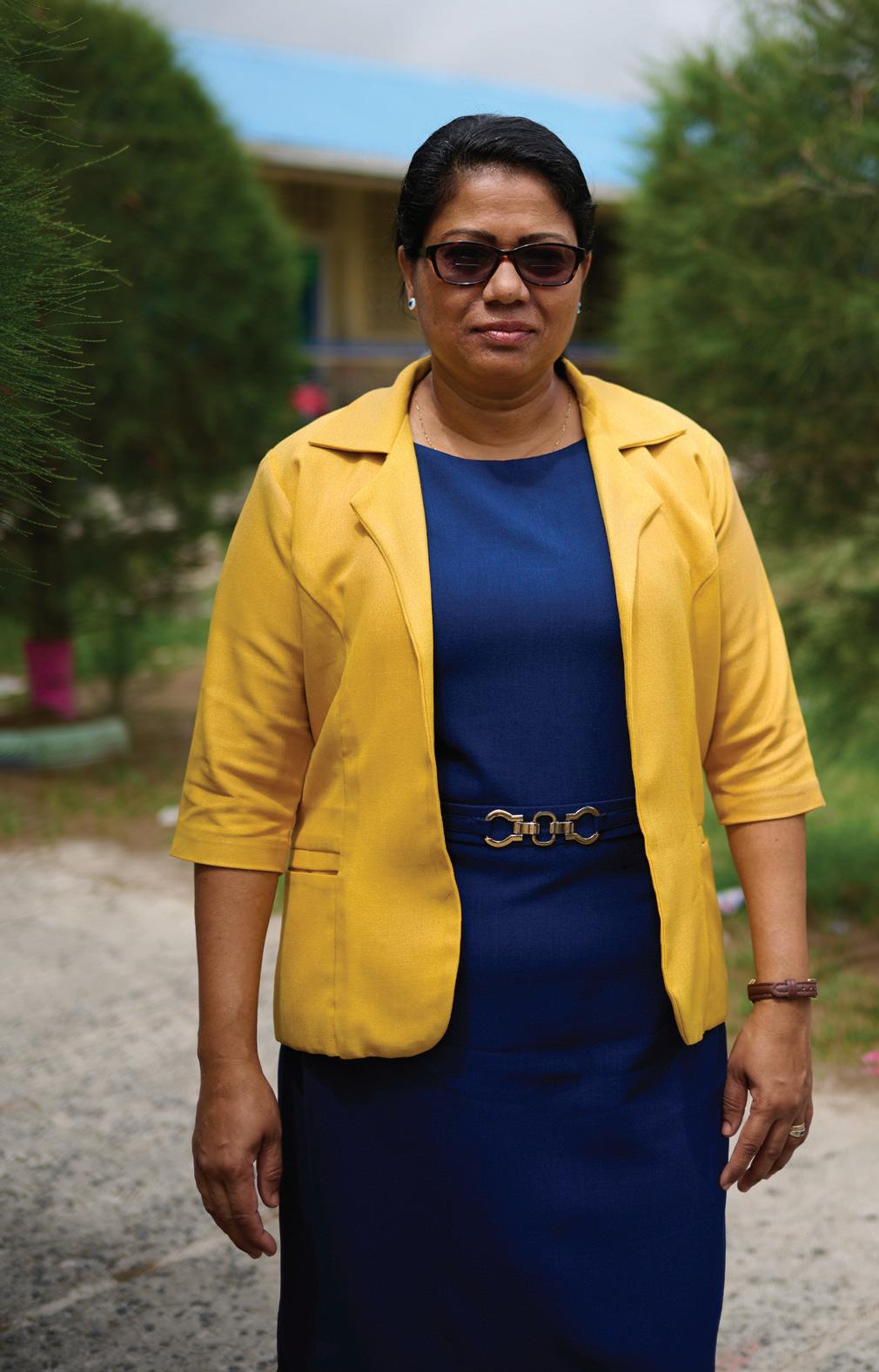

its joys. As she explained, “I grew up, actually, from the age of 10, I was living across here. Very, very young. And so we used to come across here, as I said initially, to catch, we used to catch fishes. Come over to take jamun and all of that. So we would tour this whole area. Like all those who were living in Clearbrook, like on Saturdays and so, everybody would come out together.”
what they did is start, like, streamlining, making roads,
a few years younger than herself. Although daunting,
then, being a young teacher, you had to get into the sys-
In the days of Belle West’s Claybrick factory, the people of the still-growing community were awakened by people venturing to work. Miss Allie’s father worked at the factory. Although living in the community had its challenges, it also had
Belle West was initially a community of humble beginnings. But Miss Allie says she has seen the village grow along with the people, as she stated, “You’d come over, do, you know, fun things. And then you’d go across the trench, and you’d go on over and that kind of stuff.
I can recall them when they were using excavators to clear the lands. So then when they began clearing the lands,

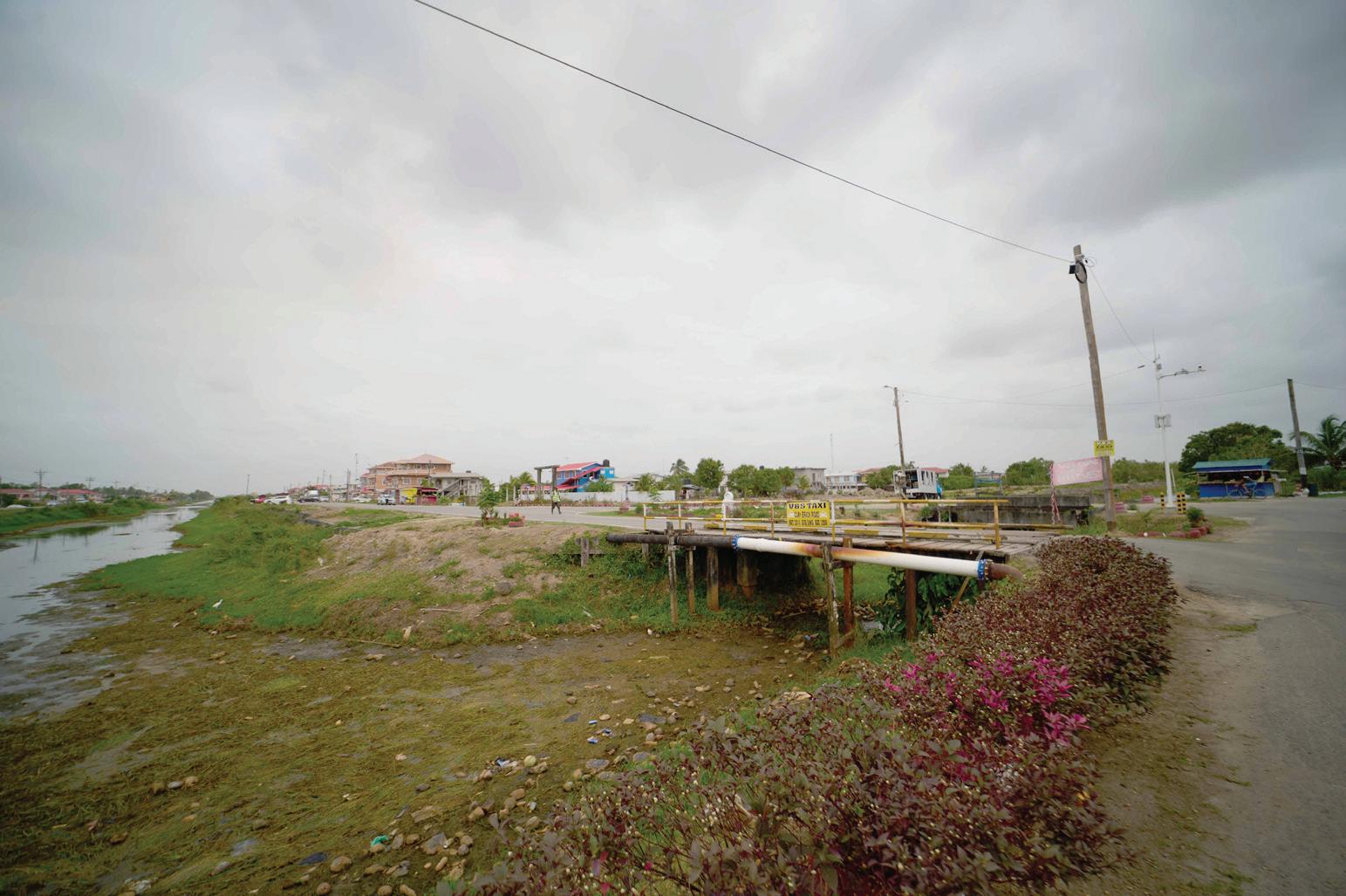
surveying, and that kind of stuff. So initially, when this community started, you had scattered houses. Because you had no light, no water, nothing, it was just the land that was given to you.”
Miss Allie has been a teacher since she first graced a classroom three decades ago. She began right out of high school and has contended with many challenges facing teachers, as well as motherhood. The young teacher was thrown into a classroom of children just
she strived to help shape the students she was given and never stopped. As she shared, “When I first started, I had to prepare these children for the National Grade 9 exam. We used to call it SSPE then. And so from that year, I had four children. Well, I had to teach grades one, two, three together. You used to do multi-grade. And then you still had to prepare them for the exam. So teaching those three grades and then preparing a class for an exam, it was very challenging. And
tem to understand.”
Miss Allie continued her educational journey for both herself and her students. She has become known as an educational pioneer along the West Bank, teaching at various primary schools as the teacher who gives free lessons to children. Her own academic development is something that Miss Allie had never stopped. She had a hiatus from studying when she gave birth to her first


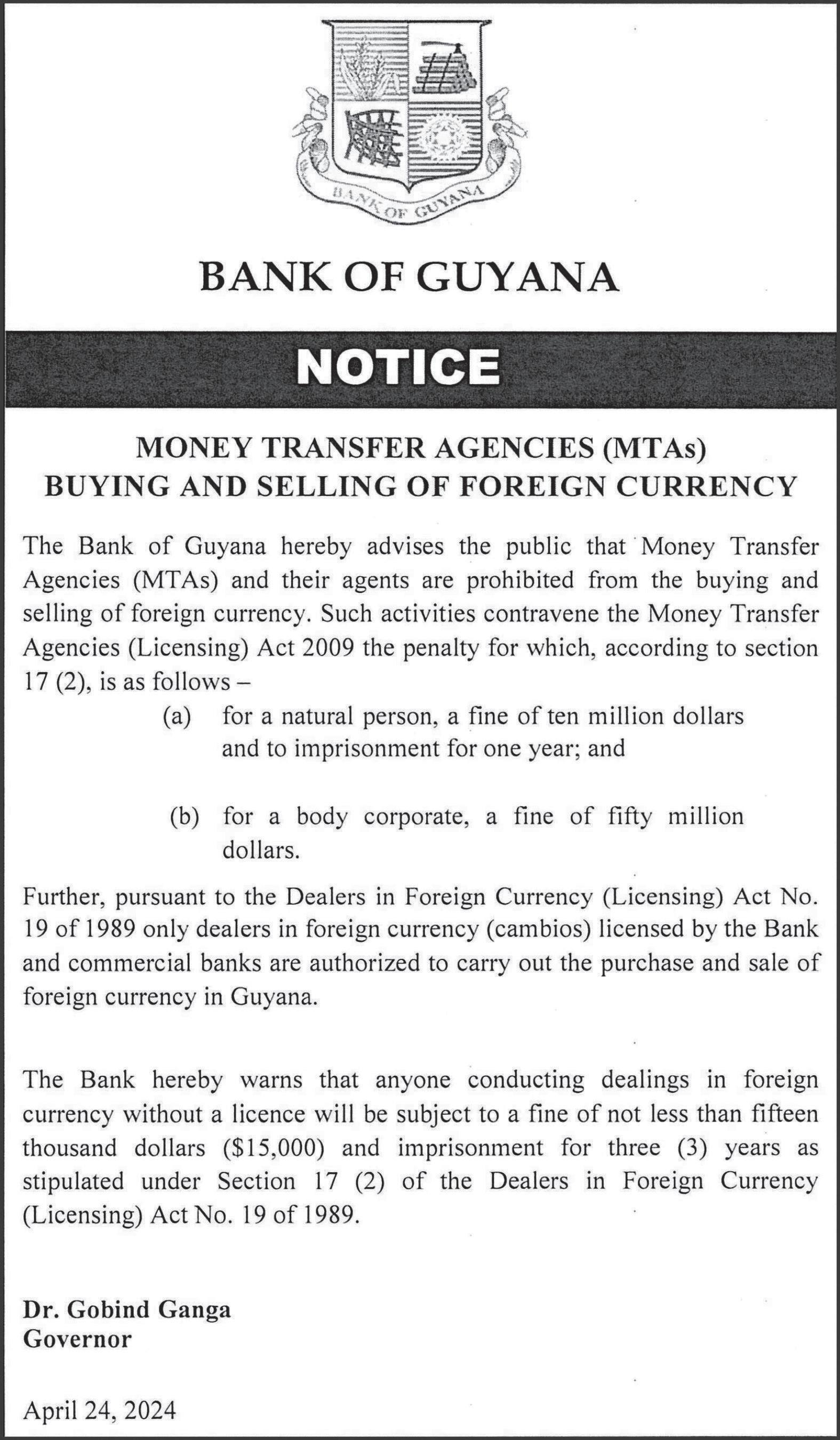

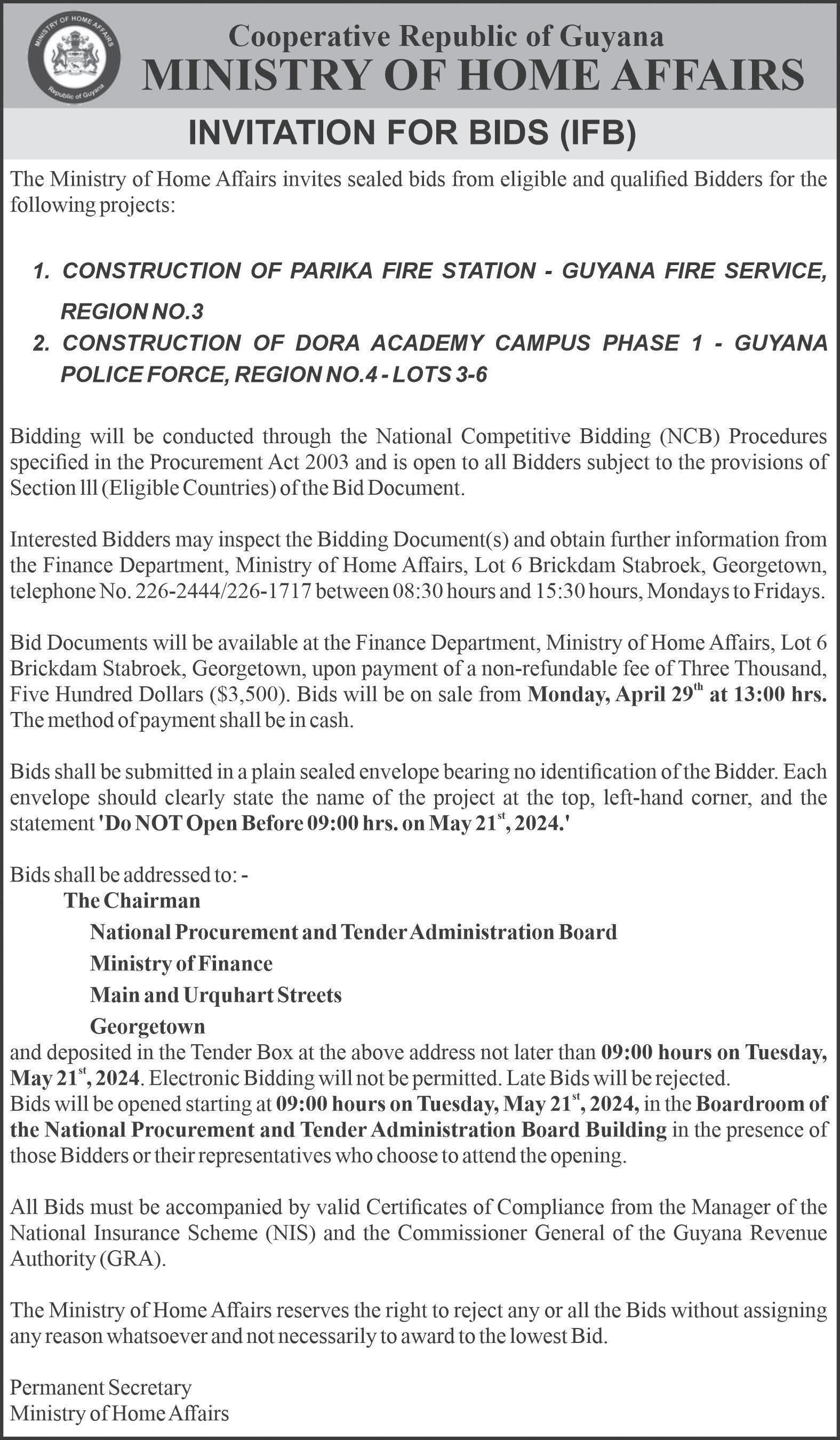
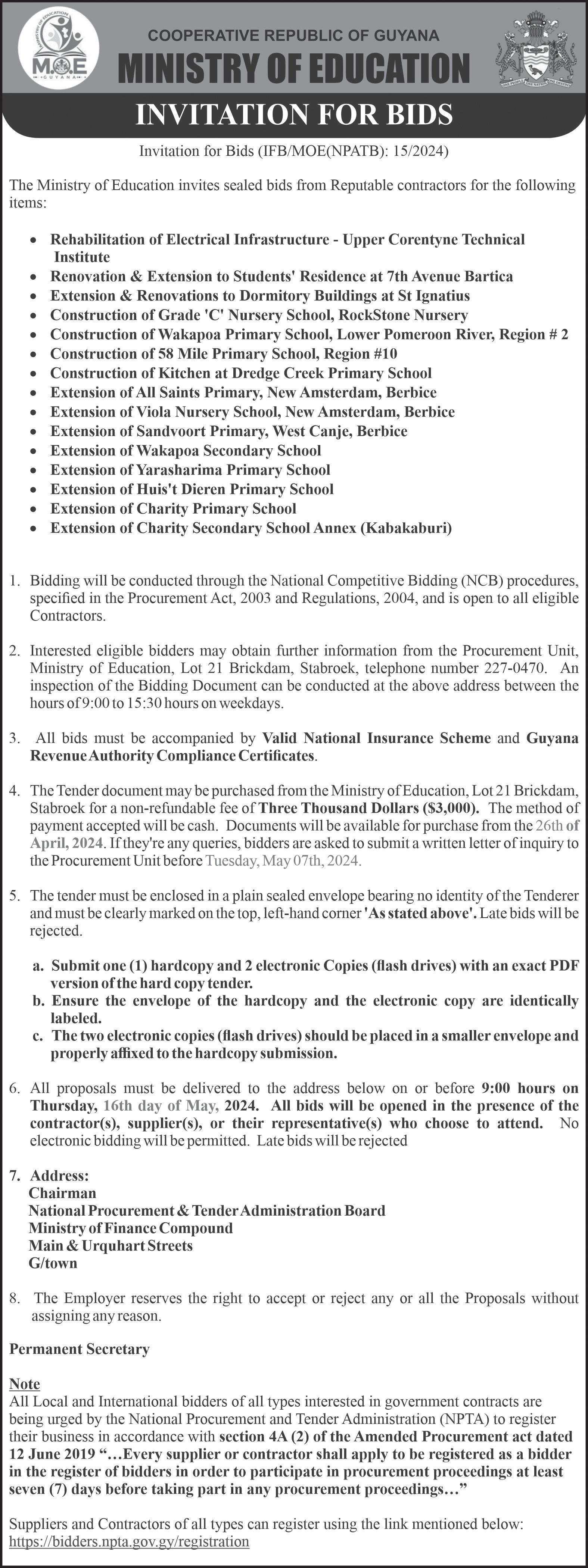
IN a bid to advance feminine care and hygiene in Guyana and provide education on the dangers of toxic traditional pads and liners, Women’s Haven Guyana is introducing an organic vending machine that’s geared towards making sanitary pads and liners more accessible within public spaces such as schools and offices.
ribbean brand founded by Caiman Islands native, Melesia Adderley, with Lexann McPhoy as Guyana’s executive distributor.
Women’s Haven is a Ca-
Business Development Officer Theon Alleyne told Pepperpot Magazine that
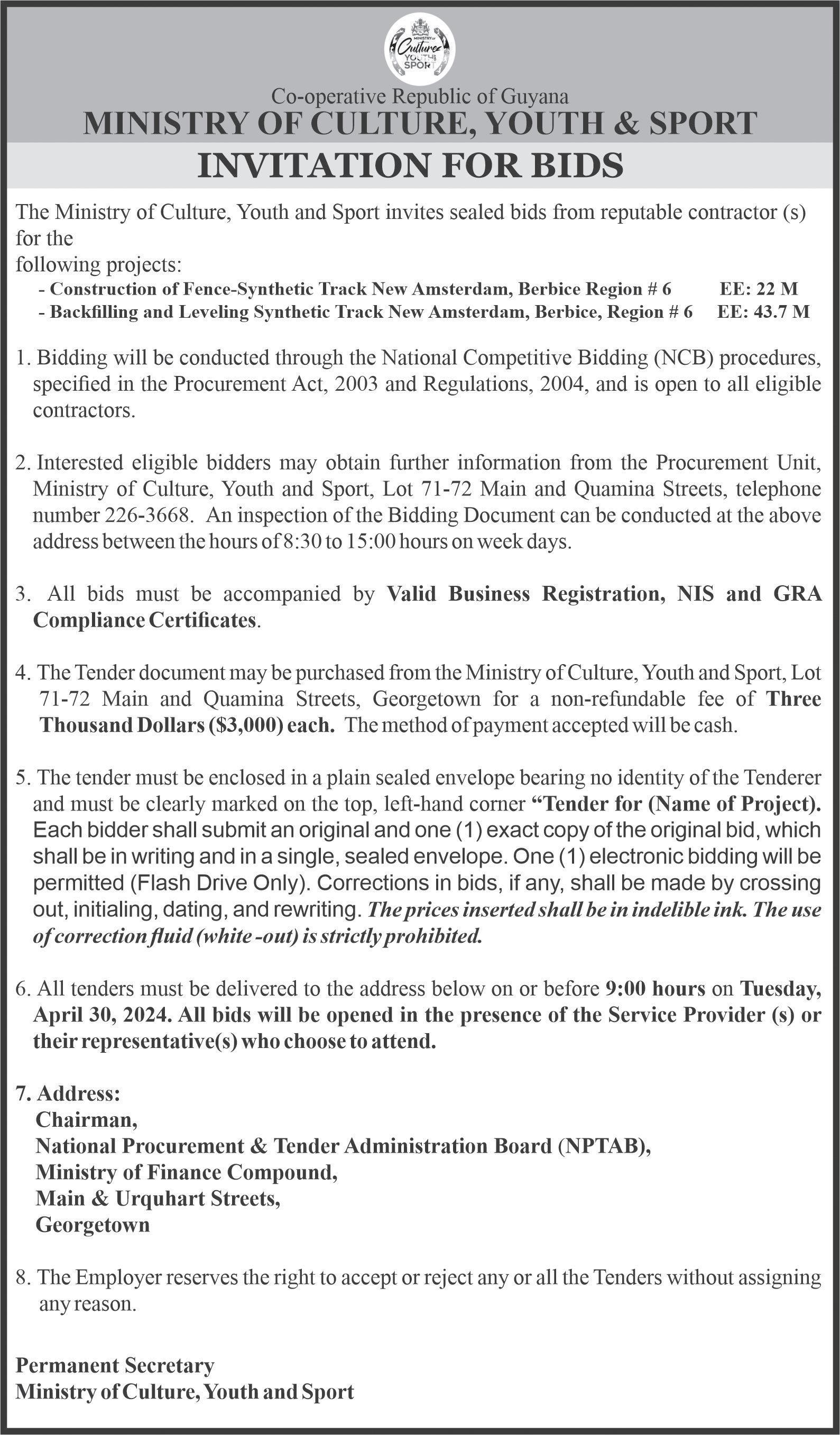

The pads are said to contain no wood, chemicals, fragrances, or dye

pads and liners
the initiative extends First Lady Arya Ali’s mission of accessibility.
Initially, there wasn’t a plan to have the machines in Guyana, but Alleyne said they saw the need, how it can benefit Guyana and advance feminine care.
Each location would determine whether the pads and liners would be free or not. “We can see a high school having this. We wouldn’t expect that the students would be paying for it; it would be something sponsored by an organisation and made accessible to the students. The same can happen in a corporate environment; some companies may have a large female staff population.” Within a month, the machines are expected to be up and running. They are expected to be quite simple to use and operate. Starting with less than a dozen, the team will observe the interest locally, and additional machines can be easily procured if needed.
“We are talking about a vending machine where people get access to organic feminine care; pads and liners that do not contain wood, chemicals, fragrances, or dye and the scientific research is that all of those things may cause feminine illnesses. So this is really moving feminine care in the right direction,” Alleyne shared.
“So when someone buys from the machine or from one of the supermarkets, they are improving their health. This is organic feminine care; this is unique. Women have been using traditional pads not knowing the harm it potentially can cause. We are giving them something different,” he continued.
McPhoy expressed that they are very excited to roll out this initiative in Guyana as they want to be able to make a difference in women’s lives and ensure they have access to good quality products, wherever they are, whether the girls in school or in the workplace.
They are located at Lot 57 Hadfield Street, between Lime Street and Louisa Row. Women’s Haven Guyana sells organic sanitary pads and liners infused with graphene, yoni oil, yoni wash, womb wellness teas, and yoni steam kits to help promote vaginal health and balance.
The machines are expected to be simple to use and operate



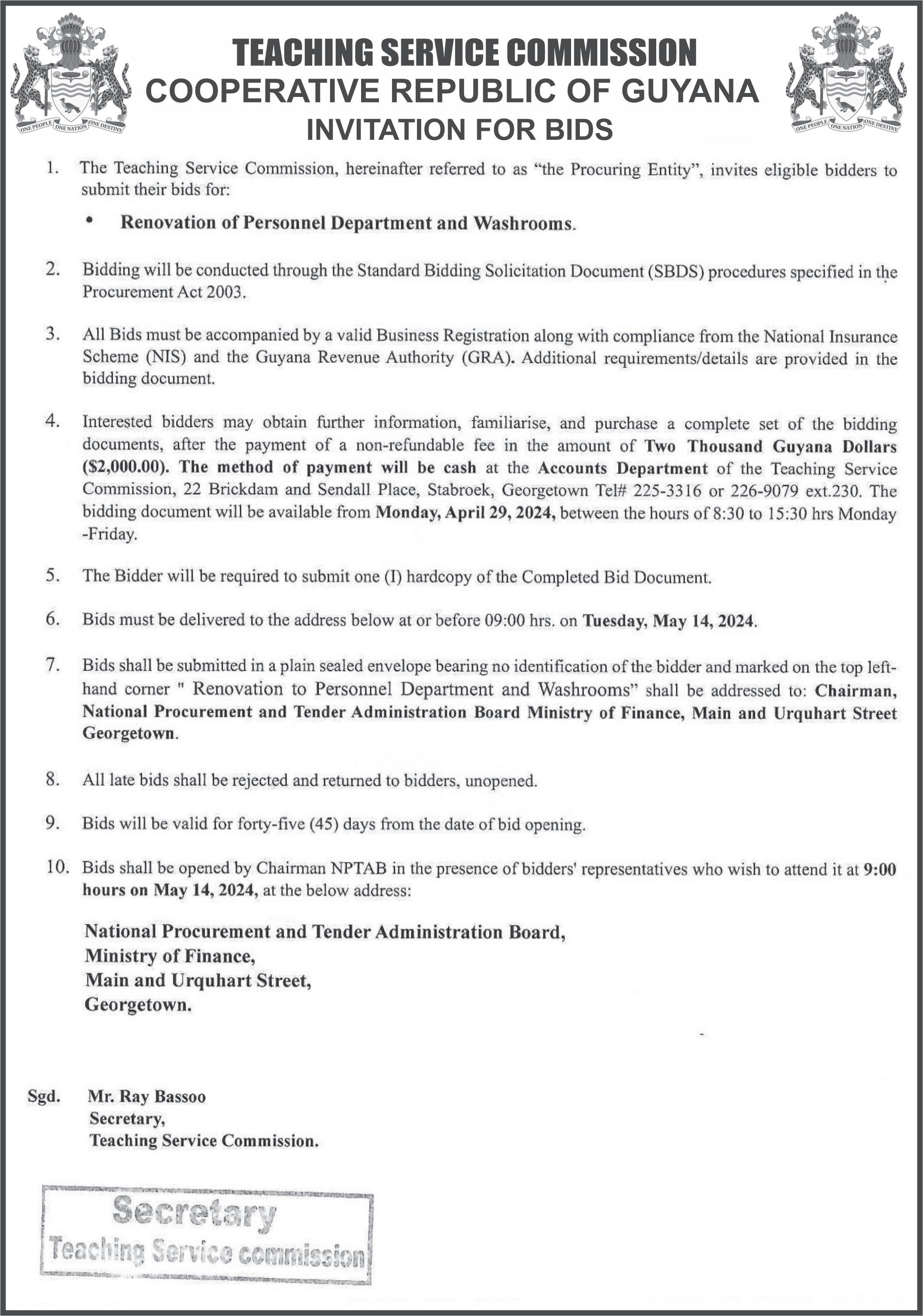

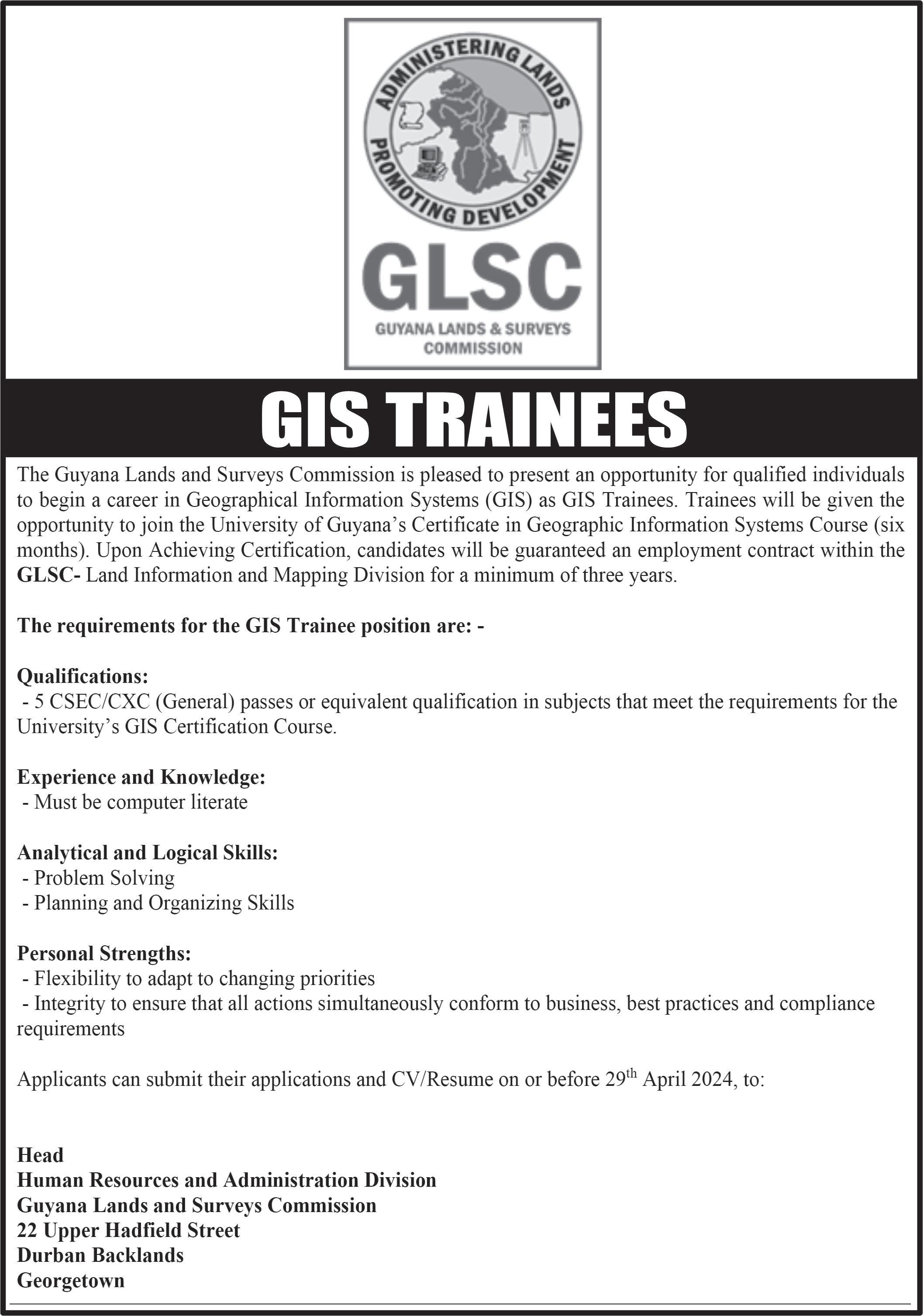
FROM PAGE II
President made some promises and almost 90 percent of those have been fulfilled. He said he would come and visit and he did,” she shared.

Most
A special $50M grant for individual households was approved, and beneficiaries received $350,000 for household renovations. Further, over $200M in road works were done in East and West Ruimveldt, giving jobs to persons in the community.
According to Trichria, who is a Liaison Officer with the Ministry of Culture, Youth and Sports, one hundred GOAL scholarships were given out, and skills training also commenced, which saw a class of young women in the community graduating from Kevin’s Reflections. “We went to them and got them to sign up because not everyone will take the initiative to sign up; this year we are looking to see how many more we can include in that.”
Trichria is passionate about getting a community building for East Ruimveldt up and running. It is a multi-purpose facility where children and community members can go for play and relaxation.
“I like to be a part of things that help to develop the lives of persons in my area. Sometimes we have so much stigma and we are working to remove that from our community. We are happy that we have government support and are getting things done.”
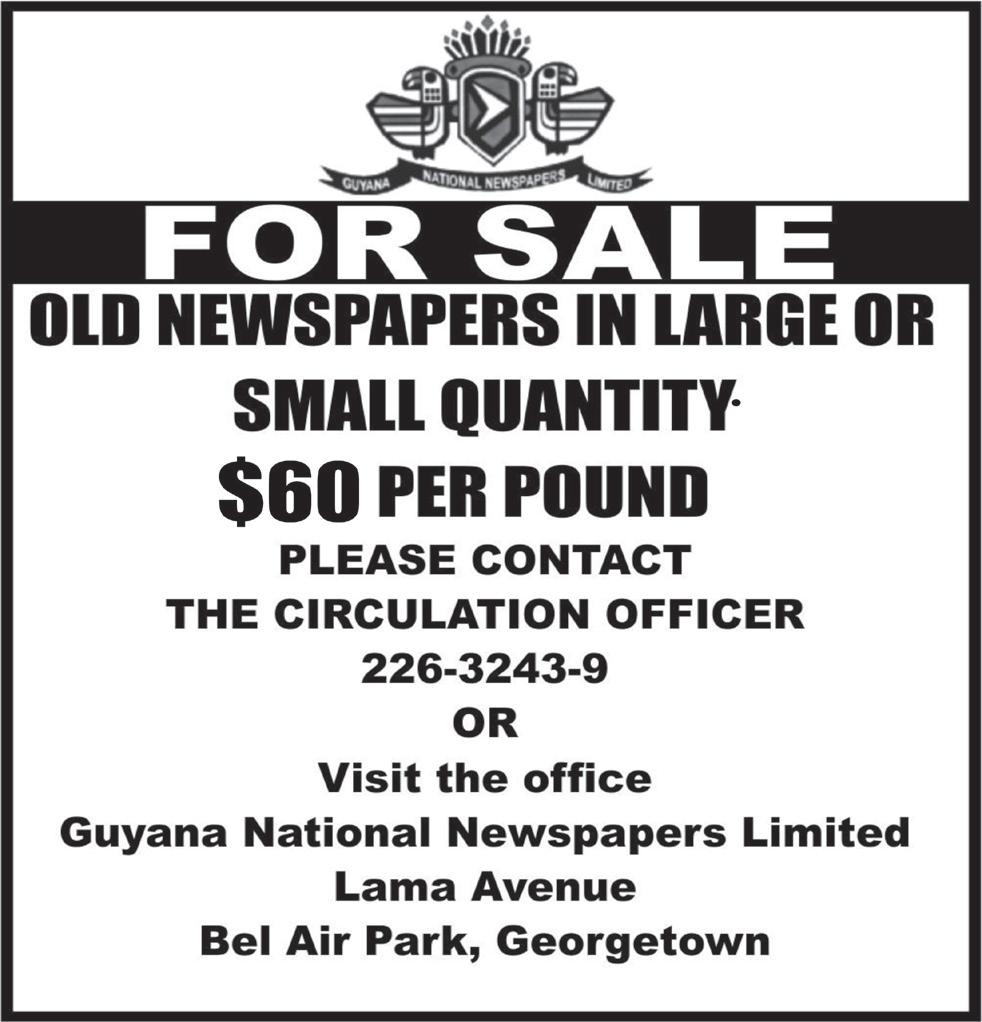
FROM PAGE V
ers with the same father but different mothers and they do not share very close relations, and as such, he doesn’t have any family support for his sister.
He related that due to his sister’s inability to walk or move, her health has deteriorated over the years, and she is wasting away just ‘skin and bones’. Although she is as an adult, her body size is that of a child and deformed.
When Savita isn’t in bed, she is in her wheelchair.
Kishan disclosed that the only financial support he gets is the monthly public assistance of $19,000 for his sister, but it dissolves quickly due to rising costs for food items and other things.
FROM PAGE IX
child. She has, however, retaken the academic mantle and is on her way to earning a Ph.D. Miss Allie has a passion for education and sharing knowledge. As she stated, “I love teaching. That’s my job. I love sharing my knowledge because I always believe once you teach children the right way, they will learn. Once you’re there for them, they will learn. Once you have the right resources, the impossible can become possible. And I’ve tried it, I’ve done it, and I’ve seen results.”
One of the things that Miss Allie has worked through is the challenge of balancing her career and motherhood. Many women see this idea as daunting, but Miss Allie is an example of the fact that balancing both is possible. As much as she is a champion for education, she also firmly believes that motherhood does not mean halting personal pursuits. As she shared, “Some people would say they’re working, and because they’re working, they cannot be there for their children. But, you know, as working mothers, we must have a balance. You have to balance your working life with your professional life.”
Miss Allie grew up in a time when Belle West was simply a community taking shape. She explained that she was raised with good family values at the centre of village life. She recounted stories that showcased the togetherness and close-knit nature of the village. Throughout the years, the village has seen its population double with an influx of new people. However, the community’s sectors are developing, according to Miss Allie. The community has more schools, with more children, a health centre, and a police outpost. Regardless of changes, Belle West is a community that continues to strive and does so together.

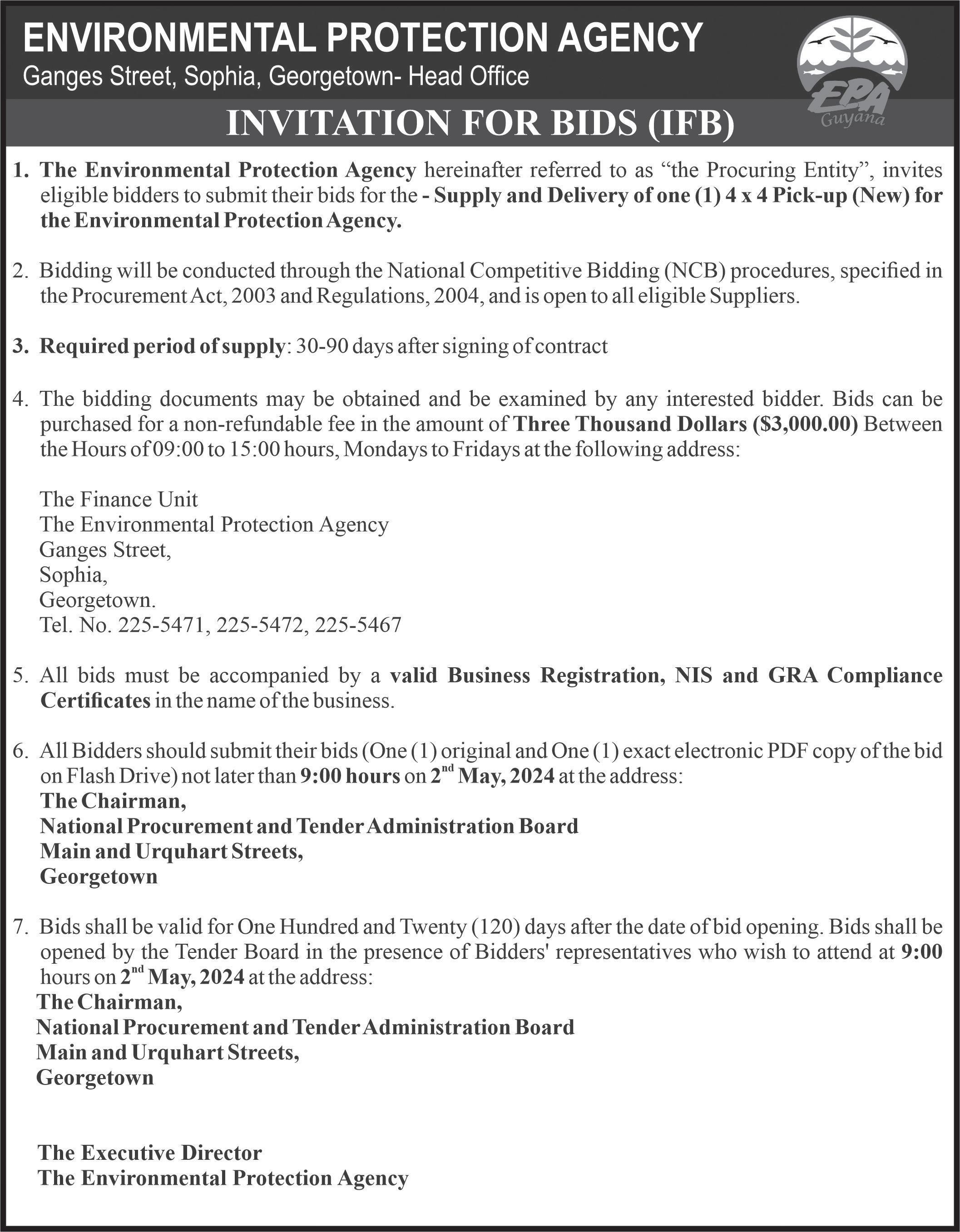


--and they belong to the realms of our boldest expressions
RECENTLY, I was hanging out with my youngest, and since my music system is not functioning, her phone is where I coax her to provide me with that memory when a song comes to mind. With me, songs archive memories that may become relevant even when writing an article or the script for a drama, towards recording events from a specific period.
Music influences souls differently. On this occasion, I made the rude mistake of telling my child that her age group is from a period of human history with a low presence of moving love songs and significant philosophy. Out went my ‘Manhattans’, as the quest to prove the old man wrong began.
The search on her phone generated love songs, but I prevailed in the compromise of agreement. A term that I had never used before, ‘Intertextuality’, was introduced and demonstrated a formidable context when I alluded that most of the new love songs bordered on delivering methods of songs from my younger and teenage era, which included the songs of our parents; her grandparents.
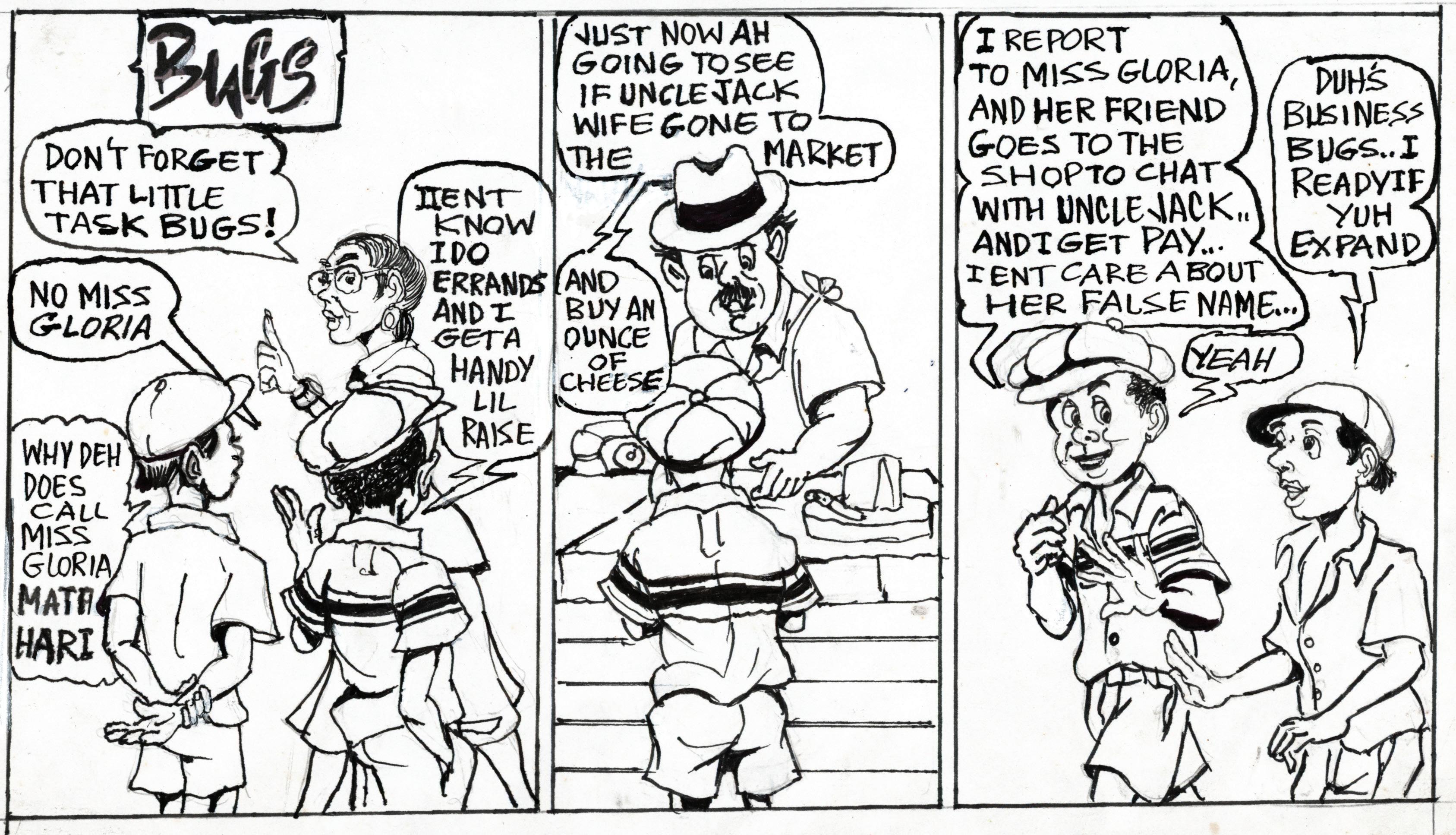
‘Intertextuality’ subdued my argument on the current. My thoughts, however, did not stop there, as I reflected that, while growing up, there were songs that told stories that inspired us that our parents or guardians were right; that even when we were not wealthy enough to attend the top pay schools, we explored our inborn skills and talents towards perfecting an industrial trade. But before that, we must and did learn to read. As I mentioned in another article, reading was on the weekly student’s timetable.
I can remember the Calypso, ‘Wayward Boy’. The lyrics were drummed into our consciousness, even as ‘The walkers and riders’. Pickpockets and purse-snatchers were always in the ‘style’, but the lyrics of Wayward Boy resonated even more, “ Tomorrow is misery, when the hangman calls for me, although I’m so young, I will still have to die because of bad company, tell them not to hang me, I’m too young to die, tell them not to hang the wayward boy”.
Then there was another popular tune, this time, a Rocksteady tune that was a Punch Box favourite, ‘Johnny yuh too Bad’, with warning lyrics: “One of these days yuh gonna hear a voice say come, whey yuh gonna run to; yuh gonna run to the rock fuh rescue, but there will be no one, hear my song Johnny, Johnny yuh too bad”.
One of the facts discussed at that time was that our music reflected things that were going on in our society at various levels of influence that needed to be addressed. But just when
a generation had grown comfortable with giving Pancho Carew a dollar to send a greeting to a potential girlfriend, Hip-Hop emerged in America. Many of us saw this later genre of its manifestation as a captured effort to distort the Afro-American community, within and without: A music genre had become the anthems of gang bangers; of violence and the missed opportunity to articulate the prevailing social crisis, rather than become consumed by self-abuse. To become the second stage of Black-xploitation entertainment.
Recently, a young singer on social media said that songs are no longer written to woo women, and he used an alphabet of negative terminologies to describe these women to justify the ‘Why?’. But what I recognised was that the titles had evolved in the lyrics of hip-hop songs. In Guyana and the Caribbean, we had references but different names to emphasise similar narratives. The Mighty Sparrow apologised for his contribution in that era. The terminologies the brother used in this post all evolved from the Hip-Hop idiom. We had other names along the way of my upbringing for folks with certain behaviour.
But let me express a conversation I had with a brother in Harlem in the late 90s. I would go by the Davy’s VEGE SHOP on 125th and this brother usually addressed me as “How yuh doing, Dawg?” We usually chat on social stuff and history. One day, I said, “I prefer you not to use the term ‘Dawg’. I’m a bit uncomfortable with it.” He wasn’t angry, but he inquired “Why?” I explained that this would imply that I’m sleeping with a female dog (the real name is considered an expletive in many circles), then my children
are puppies, and we need to be owned and housed in kennels if we’re domesticated enough. He responded, “That’s a lot, but would you mind if I use this in a rap session down the street?” I replied, “Go ahead, bro.” I never saw him again, so I didn’t know how it worked out. Within a few days, I was back in Guyana.
Cultural expressions, whether in music, poetry or conversation, should not be censored unless saturated with vulgarity or socially deemed beyond logic, but we can debate and put issues in music. It’s called civilised expression from the dawn of time.


MY last column focused on what really requires attention to find our true purpose in life. There is another facet: when we find what is important, it needs to become a habit. Unfortunately, needing or even wanting to do something is often not enough; unless it is built into our routine, we won’t regularly accomplish it.
James Clear (in his book ‘Atomic Habits’, which I highly recommend everyone reads) said, “The quality of our lives often depends on the quality of our habits”.
People often ask me if they are depressed because they are not able to accomplish tasks that others seem to do with ease. Little, everyday things like brushing their teeth seem like a chore. While, yes, in some cases that can be a sign of depression, I first think it’s a lack of routine that results in a struggle.
Our attitudes and behaviours are also a reflection of our habits. If we have a habit of positive selftalk, we will have a positive attitude; if we have a habit of exercising, we will have a healthy lifestyle.
Small habits often go unnoticed, but I ask you to consider their long-term effects. The book
“Make your bed” by an ex-military officer spoke about how that small chore, which once felt draining, not only became enjoyable but completely changed his daily routine and drastically increased his motivation and productivity throughout the day.
We all know that sometimes, after a long day, the mere thought of going grocery shopping seems daunting, but if you have a routine of shopping every Wednesday, at the same time and in the same place, it becomes as regular and unaffecting as brushing your teeth. And that’s what we should try to accomplishmake life easier by developing habits out of the heavy
and hated.
So, let’s make some habits!
The secret here is that habits are easier than motivation; it can effectively replace them. I would like to encourage everyone to practise the below as habits create complacency in our lives and do not allow for our full potential.
We can begin by using my four-step treatment process- as this isn’t something done overnight. It takes 21 days for tasks to become easier and 60 days before they are completely habitual, meaning an unconscious action or thought. So, the first habit should be patience.
The four steps are acknowledgement, planning, action and maintenance.
As always, awareness is first. What habits are bad for us, and which would we like to implement instead? Take some time to think about that.
We can also be more self-aware regarding motivation and productivity. In her book “Better than Before”, Gretchen Rubin highlights personality traits that can allow for better habits.
She asks, are you a lark (morning person) or an owl (night person)? If you are a lark, you wouldn’t want to plan the time of your new habit (e.g., exercising, studying) at night as you are not likely to achieve it. Similarly, if you are an owl, you probably don’t want to plan to begin your new habit in the morning when you are not naturally energetic or productive.
Further, are you a marathoner, sprinter, or procrastinator?
A marathoner works meaningfully, slowly, and steadily by growing energy from consistency; sprinters have and use quick bursts of energy and burn out quickly; procrastinators are currently not doing much at all. Which are you? Knowing
this can determine how to set your daily habits. For example, if you are a marathoner, it’s best to set the long-term goal of losing a certain amount of weight in two years while making small lifestyle adjustments. If you are a sprinter, you should exercise the moment you wake up in the morning, as you may not have the energy and motivation as the day wears on. If you are a procrastinator - start small!
Most goals fail because they are too big to fit into a routine, resulting in feeling overwhelmed and discouraged.
Set small, maintainable goals- if it’s saving money, put aside $500 per week; you can increase it when able, but you are far more likely to be consistent and successful than setting a goal of saving $2,000 per week.
Be as specific with your goals as possible. Don’t just put ‘I want to achieve more tasks in my day’. Write down what specific task, how much time you want to dedicate to it, for how long, and what is the end goal- this strongly increases chances for success.
Replace unwanted habits with their direct opposite. For example, replace procrastination with a habit of taking action right away or replace negative self-talk with positive self-talk.
Plan to include keystone habits, which often increase the likelihood of success. These are habits that, when implemented, cause other good habits to fall in line. For example, if your goal is to lose weight, a keystone habit would be keeping a food journal, where you record everything that you ate or drank during the week, the time and place, and the emotion you were having at the time. This allows for visual accountability and identification of triggers, which will subsequently improve eating habits.
You can also plan to pair new habits with ones you
already have to make them easier. For example, if you’d like to make flossing a part of your routine, it will be much easier if you do it every time you are brushing your teeth.
Plan to remove temptation. If you want to eat healthily, don’t keep unhealthy food in your home.
Act with consistency. For something to become a habit, it needs to be done daily, even for 10 minutes. It helps that the activity is as clear and specific to you as possible.
Some feel that maintenance means that the hard part is over, that we were able to make change, and that we just need to continue. While that is true to an extent, so many things can
throw us off track. I find the most helpful thing to remember during this phase is that most of our desirable goals do not have immediate rewards. For example, if losing weight is your goal, exercise and healthy eating will be difficult for a few weeks, and the slow transformation can be de-motivating. However, when you pick up fast food, there is a perceived immediate reward. Just remember that almost anything good has non-immediate rewards as it is a permanent improvement. Chocolate eaten today strengthens the habit of eating chocolate, increasing the chances of chocolate being eaten tomorrow. The choices we make today determine our choices tomorrow.
Also, an obvious help is support for accountability. Find another person who has similar goals and help each other stay on track- you are not alone in your desire for improvement.
If we all take away one thing, I would like it to be that habits conserve energy. Once developed, they require little motivation to keep going.
If you have one bad day of procrastination, one bad meal, or one day of overdrinking, it’s not so bad. However, if you do this every day, the results are catastrophic. That could only be the same for good habits- done every day- The results will be tremendous!


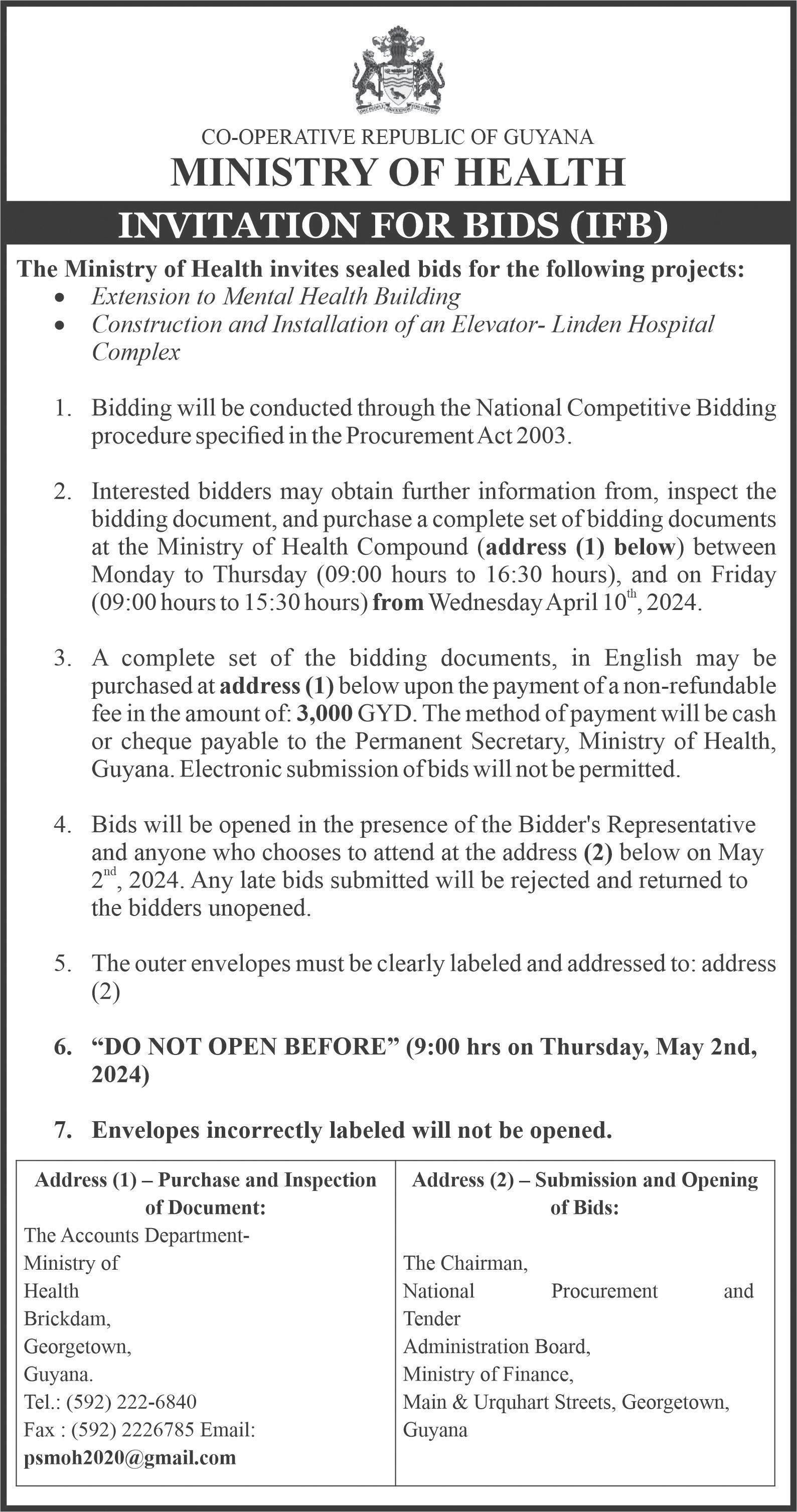
SINCE the 1960s, there have been three Guyanese who have had the distinction of attracting the attention of news anchors and journalists worldwide: Dr Cheddi Jagan during the turbulent times of the Cold War; Dr Bharat Jagdeo in the ecological explosion and his innovations for Third-World debt elimination and Dr Mohamed Irfaan Ali, Guyana’s sitting President, for his brilliant defence of Guyana as a miniscule climate-change agent and a massive carbon sink with its forests absorbing 19.5 gigabytes of Co2.
President Ali’s memorable interview with the BBC’s Hard Talk’s Stephen Sakur, where he deflated the arrogance of the presenter and convincingly explained to the world the necessity for Guyana’s oil industry and its minimal effect on climate change and also Guyana’s forests being consciously maintained as one of the world’s notable carbon sinks, went viral. The BBC interview focused on oil, so the President did not have the opportunity to speak about the forests. In this offering, we will therefore focus on the forests.
Over 85% of Guyana’s land mass is forests -- covered with a very low deforestation rate of less than 1%. The Guyana forests could be classified into six typesrainforests (36%), montane forests (35%), swamp and marsh (15%), dry evergreen (7%), seasonal forests (6%) and mangrove forests (1%) and all life on Earth has a relationship to forests.
Forests influence the quality and quantity of water essential for sustaining life and for activities such as
agriculture and energy production. Over 25% of pharmaceutical medicines are derived from rainforest plants, and this is only from 1% of the forests so far researched – it is quite likely that as more research is done, the number of health-giving medicines will grow. In developing countries, the use of plant-based medicines, “folk medicines”, is about 80%. Long tradition and scientific studies have shown that contact with nature positively influences human mental and physical well-being, boosts the immune system, lowers blood pressure, and promotes relaxation. Though mangroves are linked with the Low Carbon Development Strategy 2030, they are much more than that in that they are a part of the sea defences and provide a habitat and breeding ground for many types of fish and birds. Forests also provide a home for various indigenous peoples and provide jobs such as logging, carpentry and tour guides.
Forests harbour over 80% of terrestrial biodiversity. Guyana’s rainforest is particularly rich in this regard and is home to many endemic plants and animals, such as the giant river otter and the jaguar.
Forests face many threats, including deforestation, climate change and unsustainable forest-management practices. The Guyana Forestry Commission (GFC) is taking measures to meet these threats; we will mention some of these measures: the Yarrowkabra Forestry Training Centre on the Soesdyke - Linden Highway is educating members of the Youth in Natural Resources (YNR) on reafforestation, forest conservation and bio-
diversity.
The centre has also launched a seedling station. In addition, a $900 million revolving fund to boost the forestry sector has been established. The GFC uses technology in its work in forestry management. An example of this is the Monitoring, Reporting and Verification System (MRVS), which enables the country to monitor its forest resources and, through satellite images, to monitor and report forest changes. The GFC has been engaging with International bodies regarding the certification and recognition of Guyana’s forests. For example, it has engaged with the European Union Forest Law Enforcement Governance and Trade (FLEGT) Voluntary Partnership Agreement (VPA). A stepwise legality system is being developed, and a FLEGT licence will eventually be issued to qualified forest-sector stakeholders. Once mutually recognised, Guyana’s forest-sector operators certified under the Guyana system could leverage international credibility to market their wood products globally as legally sourced and sustainably produced. This enhances access to global markets for Guyanese wood products. Additionally, these activities by the GFC have resulted in Guyana earning several hundred million dollars as carbon credits from Norway and the Hess Corporation. Guyana’s forest assets will continue long after the oil resources have been exhausted or the price of oil has fallen so low that it is barely profitable.



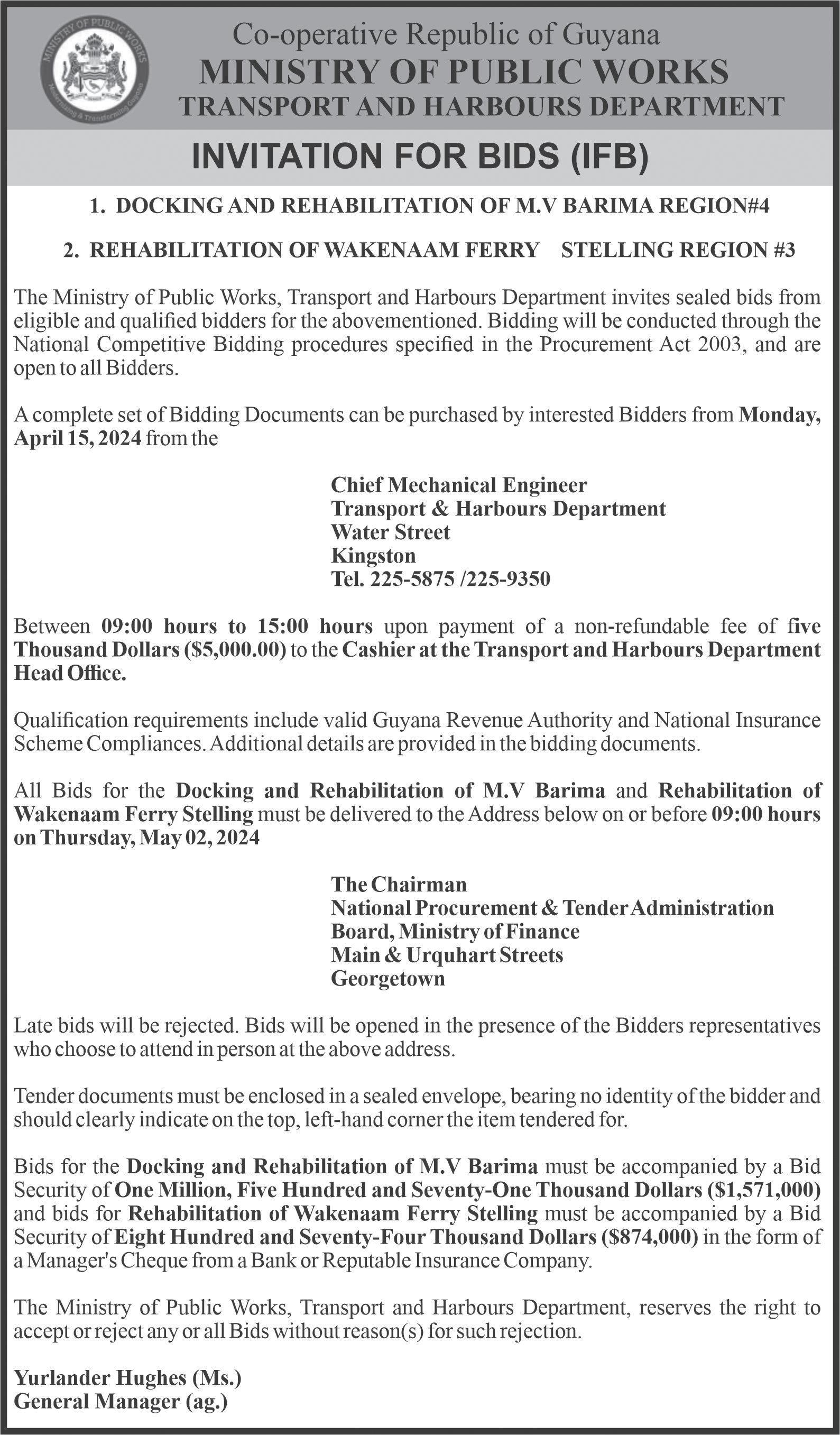
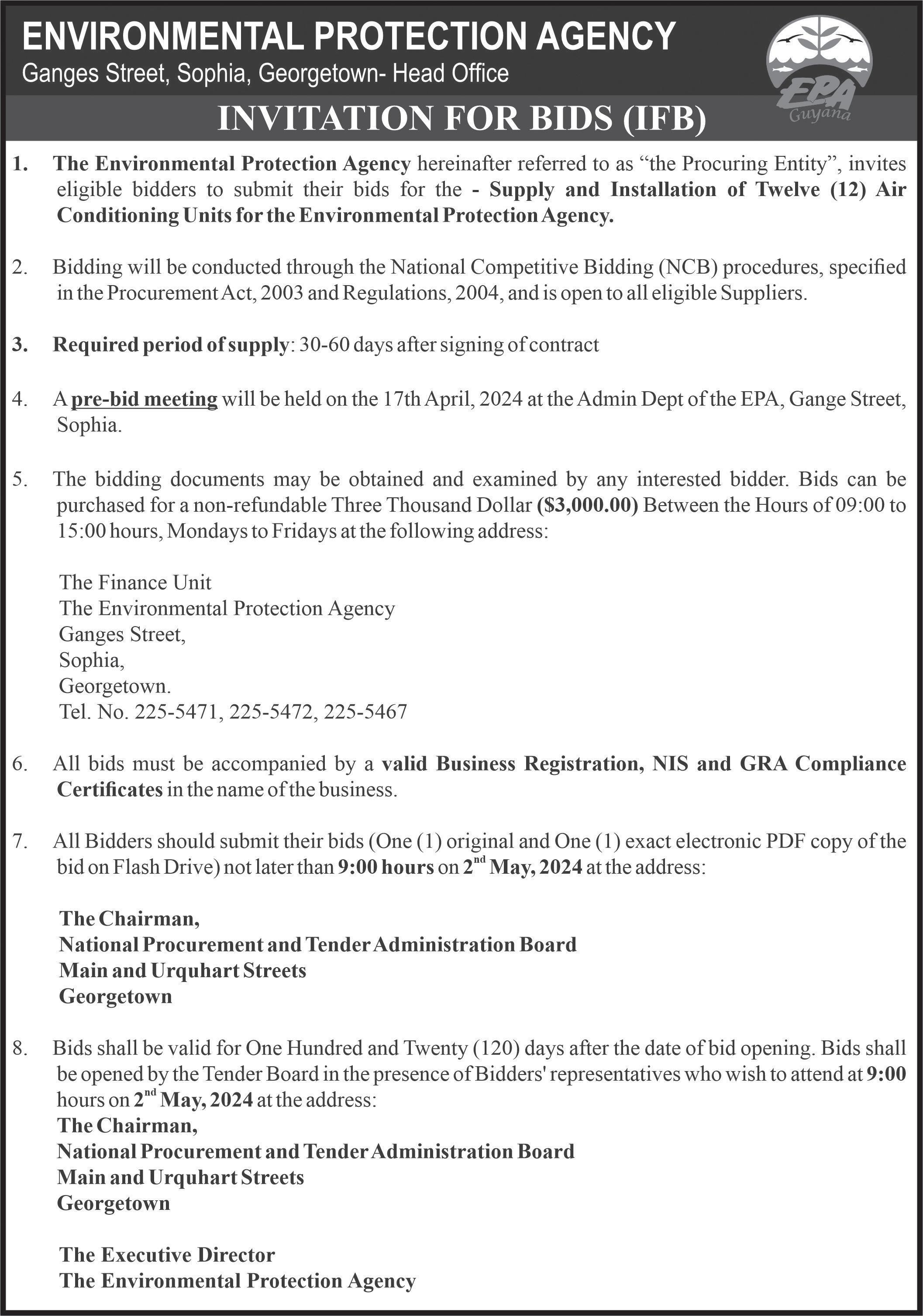




BELOW, we share responses to some common questions asked about root canals:
Who would not want a toothache to disappear from a tooth for good?
The solution is root canal treatment. It seems that root canal treatment is one of the mysteries of dentistry from the point of view of the average person. Let’s try to unravel that mystery if indeed it is.
What is root canal treatment?
Root canal treatment (also called Endodontics) is needed when the blood or nerve supply of the tooth (known as the pulp) is infected through decay or injury. The result is that the tooth becomes literally lifeless and, therefore, incapable of eliciting pain.
Why is root canal treatment needed?

If the pulp becomes infected, the infection will spread through the root canal system of the tooth, which may eventually lead to an abscess.
If root canal treatment is not carried out, the infection will spread, and the tooth may need to be taken out.
Does it hurt?
No. A local anaesthetic is used, and the whole procedure should feel no different from having an ordinary filling done.
What does it involve?
The treatment aims to remove all infections from the root canal.
The root is then cleaned and filled to prevent any further infection.
Root Canal Treatment is a skilled and time-consuming procedure. Most courses of treatment will involve two or more visits to your dentist. At the first appointment, the infected pulp is removed. Any abscesses that may be present can also be drained at this time. The root canal is then cleaned and shaped to be ready for filling. A temporary filling is inserted, and the tooth
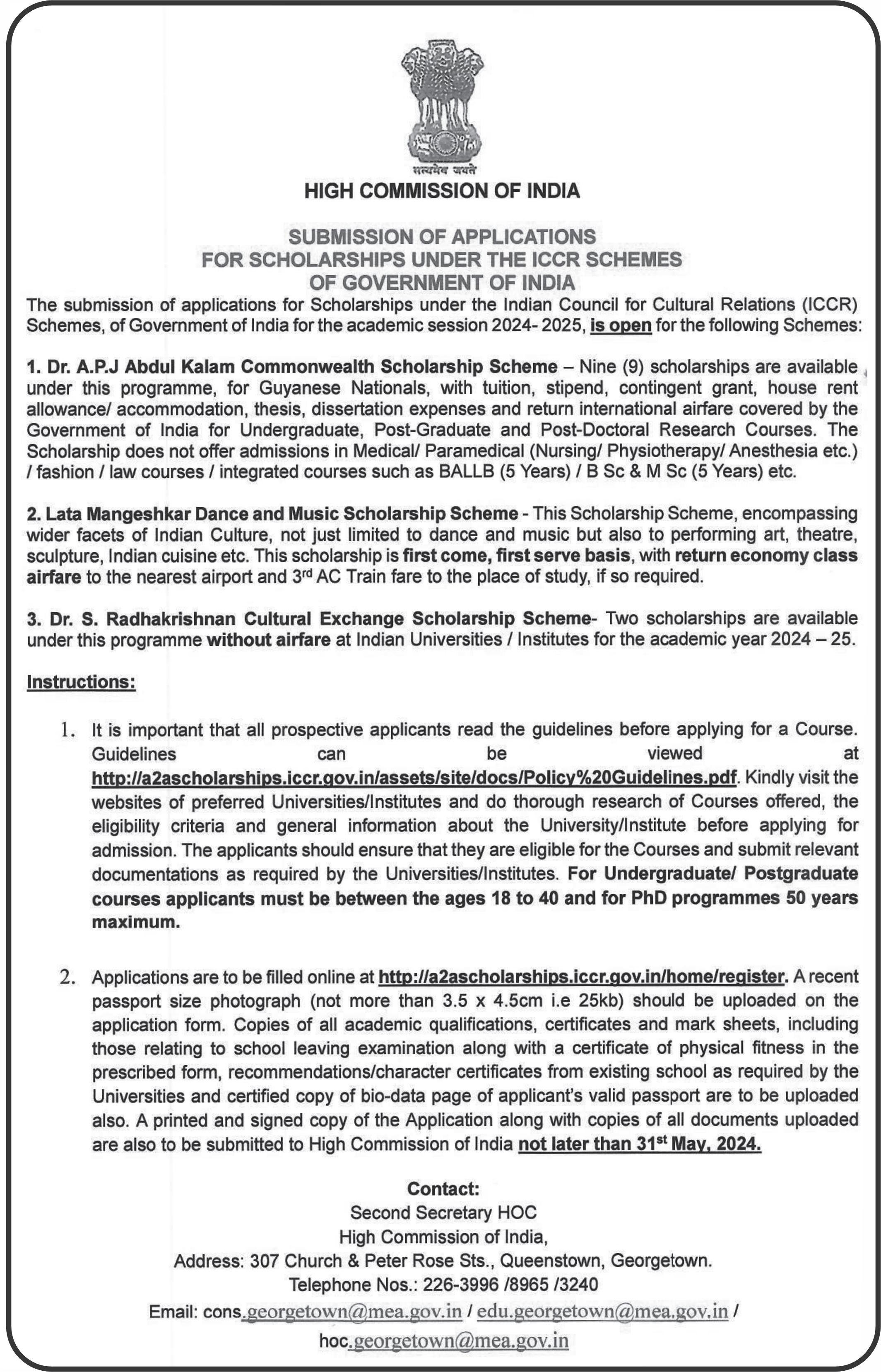


WHEN the word maintenance comes to mind, it may be firstly considered as the repair of cars or machinery. However, these are not the only things that can be maintained over time. It is important for us to maintain almost every aspect of our life. Every day, we try to maintain relationships, businesses and even our work. Similarly, physical infrastructure and even social systems are maintained at a larger scale. But how do we manage to keep and continue the existence of everything around us? The art of maintaining something is to ensure that you retain its function and prolong its existence. It is usually overlooked but it is a key aspect of our everyday life.
If we don’t maintain the mechanical abilities of our automobile, then how will it live up to its current use? Similarly, we should strive to maintain and upkeep all aspects of our lives in that same manner. I want to highlight that we should not leave things up to luck or chance for them to prosper.
This can be generic, and the key notions of these explanations can be transferred to almost every aspect of your life. It takes hard work, time and effort to ensure the longevity of social systems and relationships. If only we could maintain things in life with the snap of our fingers, life would’ve been much easier. However, this is not the case. Life is not always that simple.
You’re in a long-distance friendship? A simple phone call once a week can help maintain it. Do you want to maintain good grades in school? Well, you have to study and apply your knowledge when it’s crucial in order to do so. Would you like to stay within a certain weight range? You have to learn how to manage your diet and exercise accordingly. These are practical examples of how you need to work accordingly to ensure the maintenance of life’s activities or events. The lack of maintenance is usually a downfall, and we’re left wondering why things did not improve or continue as we expected.
Not only can this simple word be interpreted in our own lives, but the overall development of our country relies on maintaining what we already have. We have new bridges and roads, but what good will they be if we don’t regularly check to see what needs fixing? If we don’t maintain the current social services we currently have, how can people continue to benefit from them? I do believe this is something that needs more careful thought and attention in all aspects of our culture here in Guyana. Personally, I find that there are three important things to consider when it comes to maintenance.
1. You should remember that a specific aspect of your life requires active maintenance.
2. Create a checklist on how you think it should be maintained.
3. Go beyond that checklist and actively seek to maintain.
Just as we can create beauty or car maintenance lists, I believe we can go beyond those and prioritise other important aspects, such as maintaining proper mental health or healthy relationships. At the end of the day, what you choose to maintain is based on your personal experience and priorities. I just wanted you to be aware that most things in life require our attention and effort. I do hope you become more mindful of this from now on.



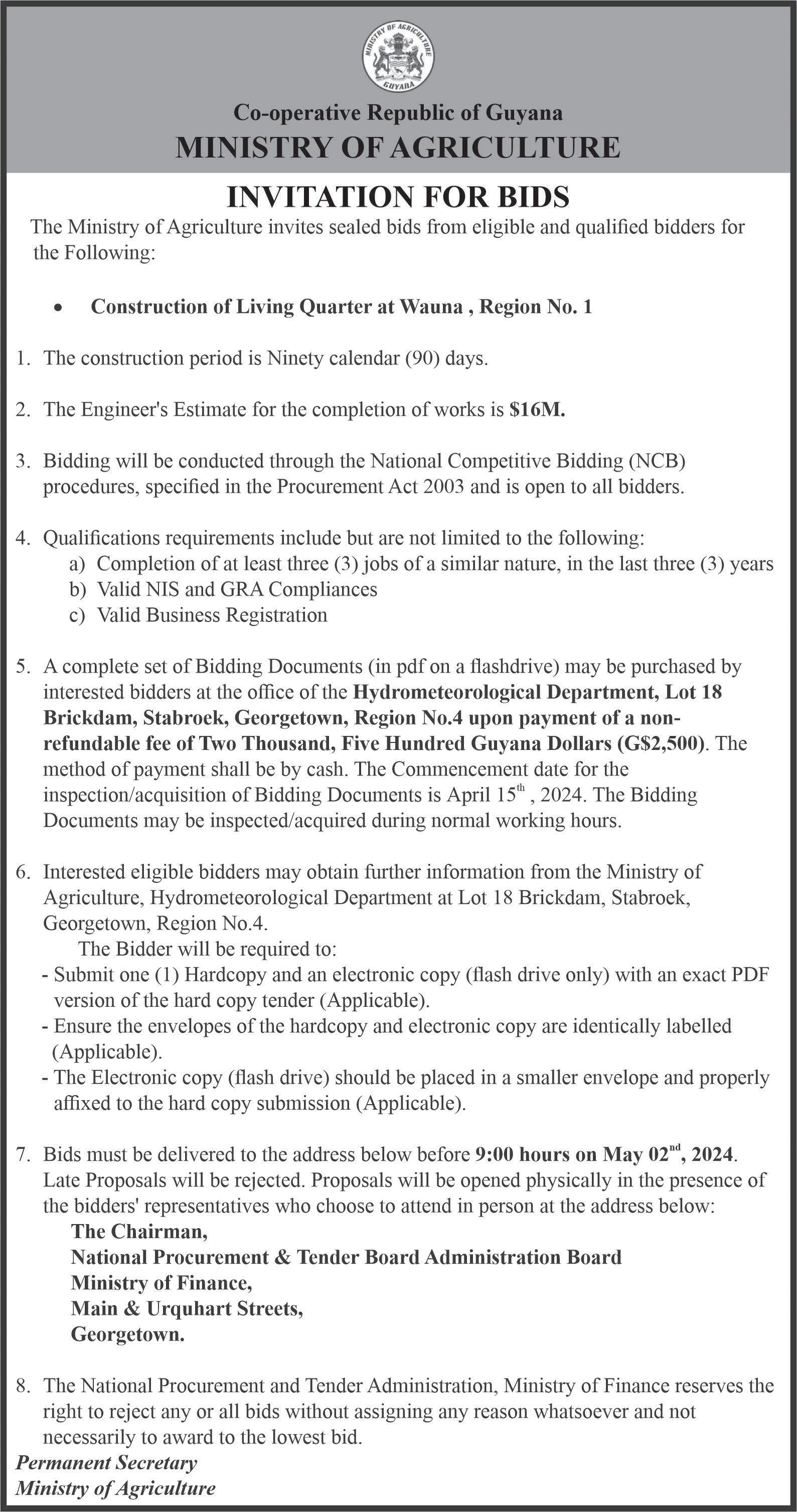











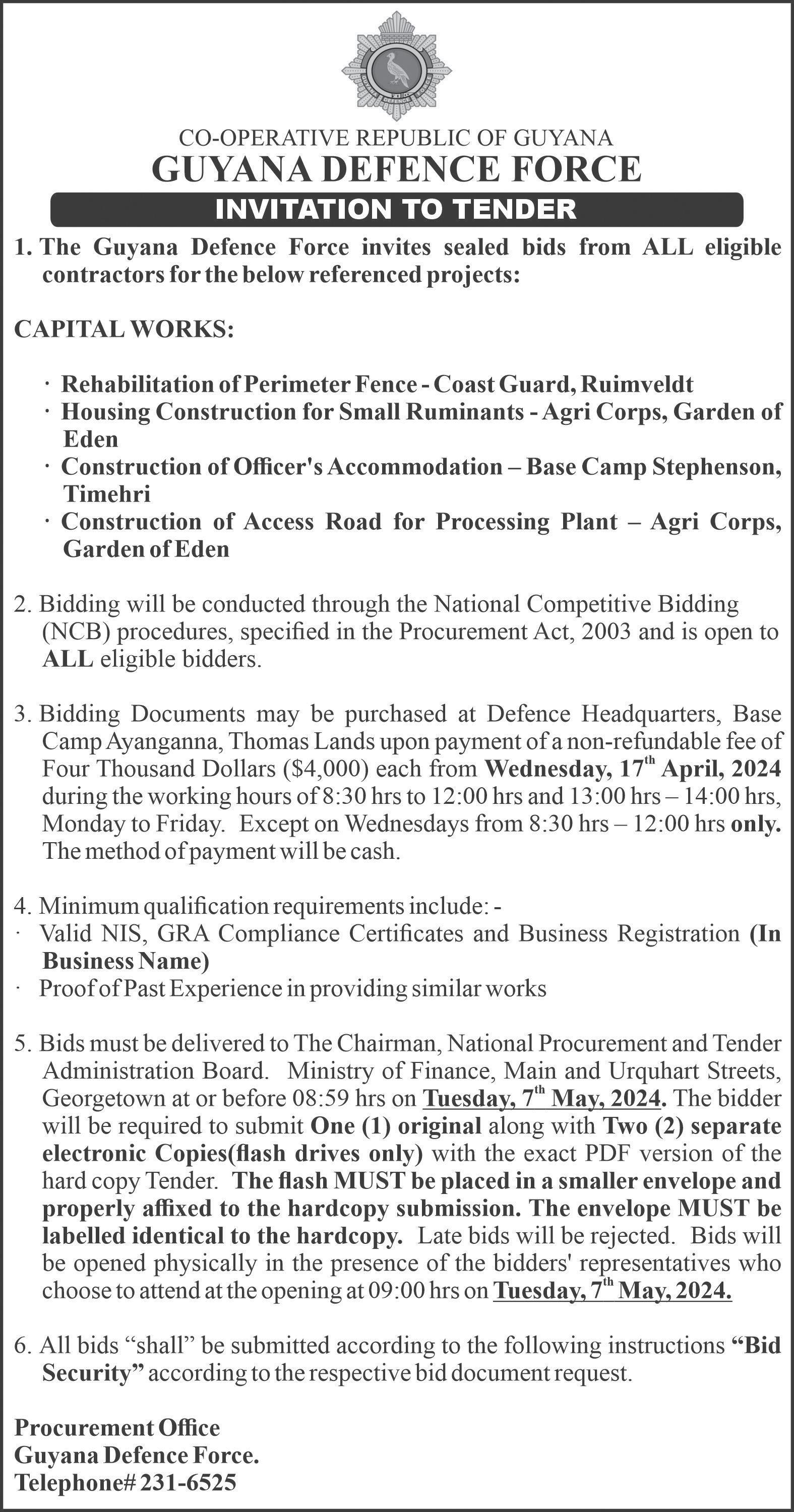

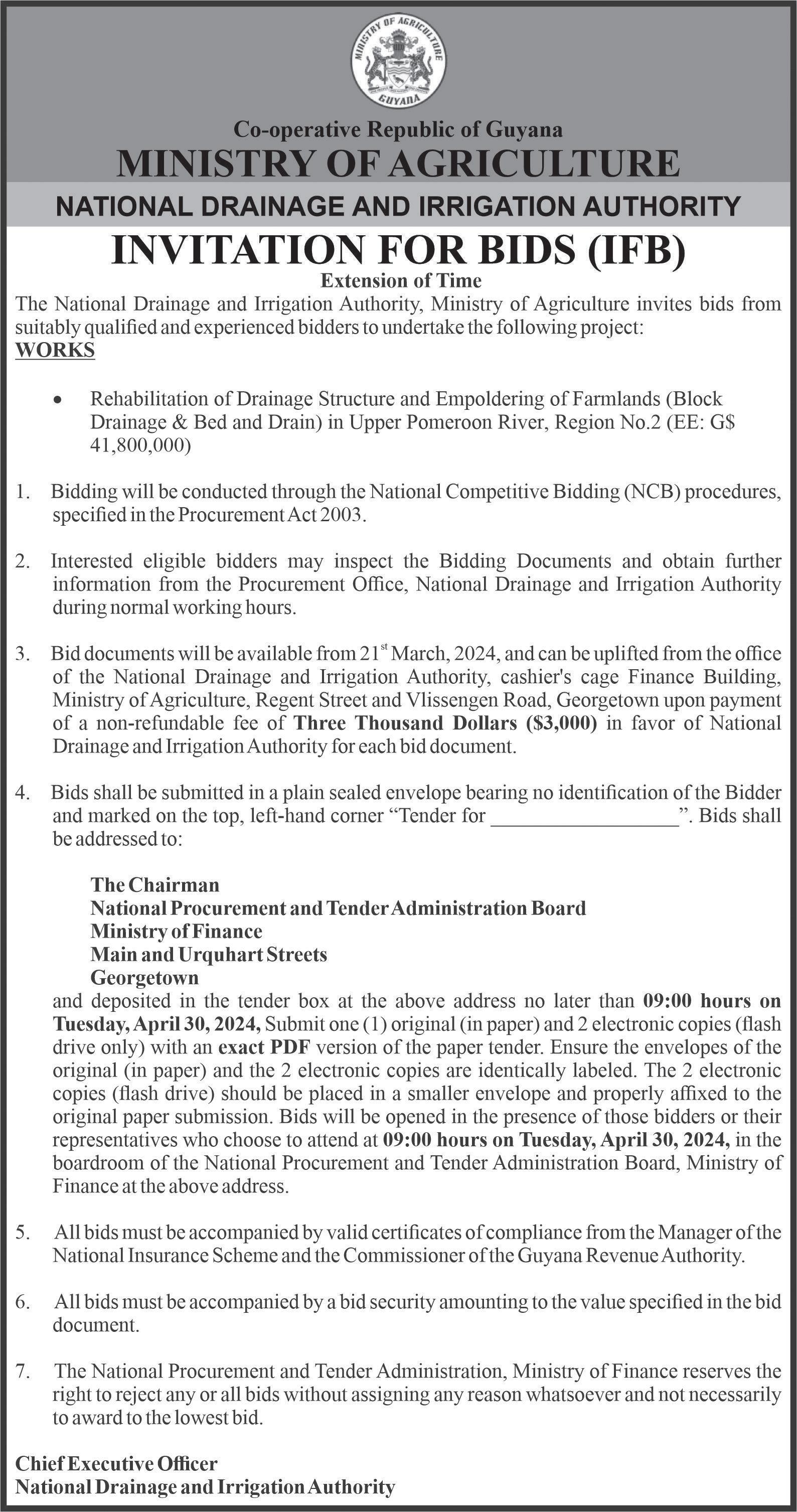
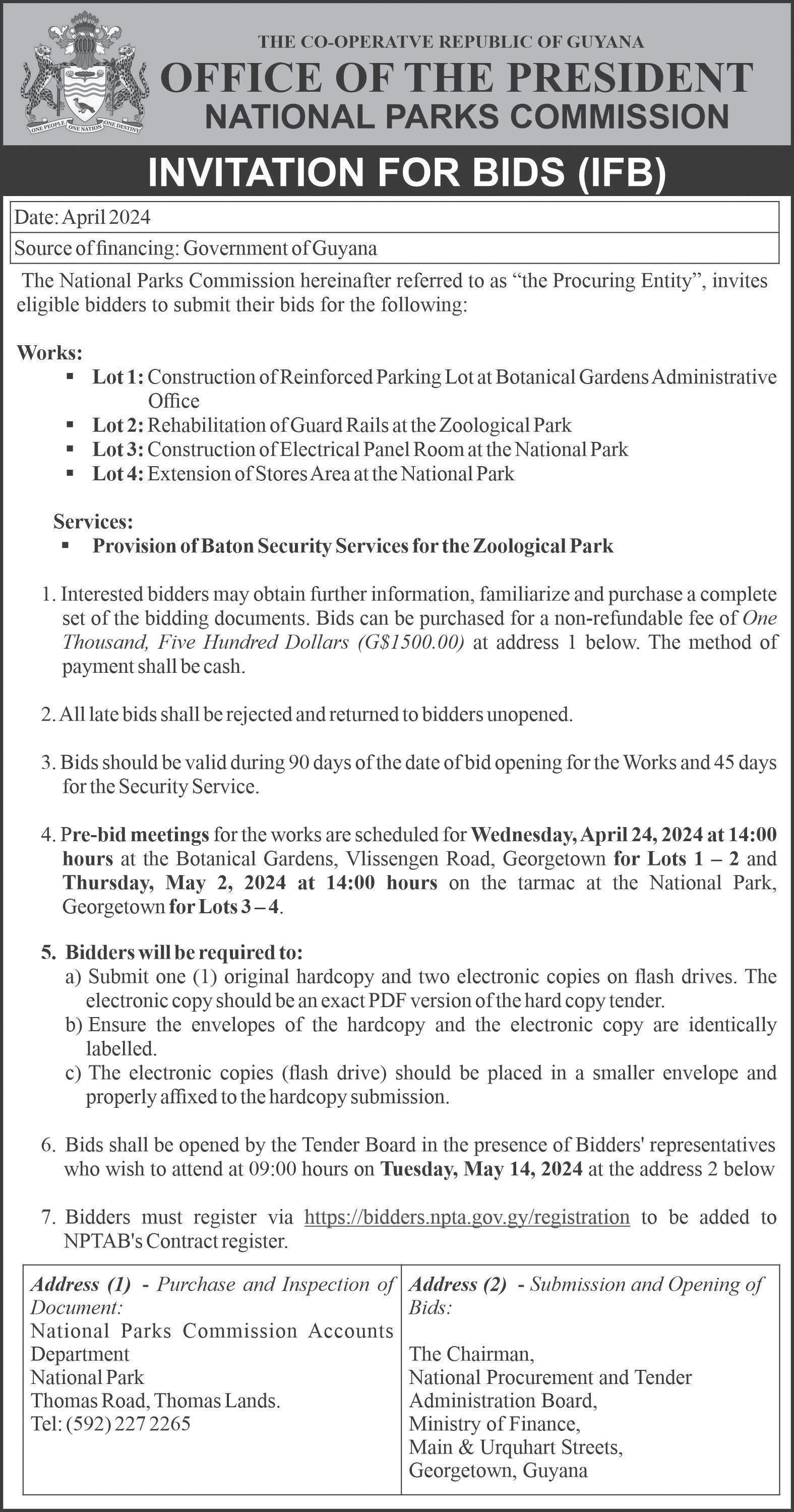




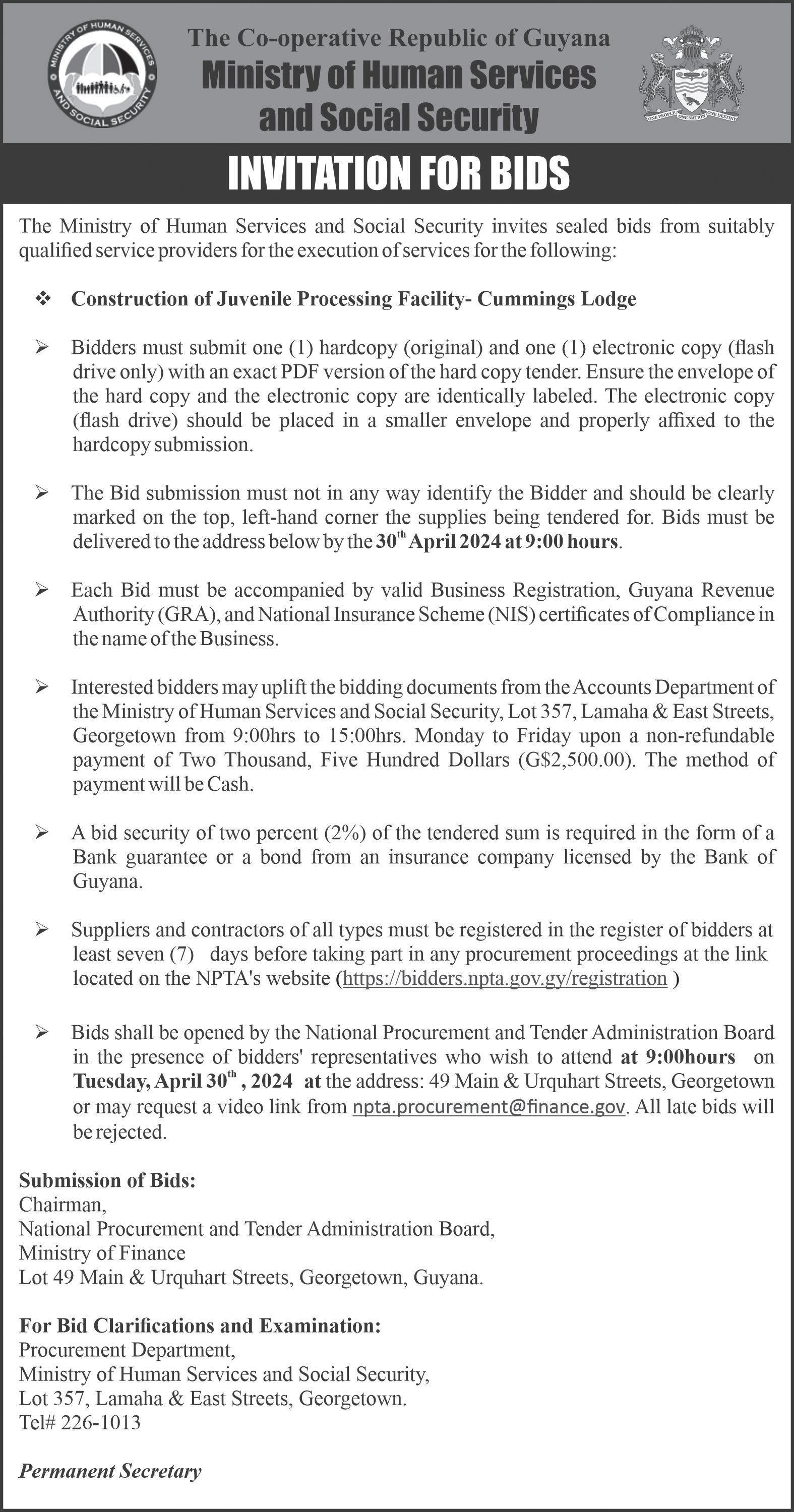





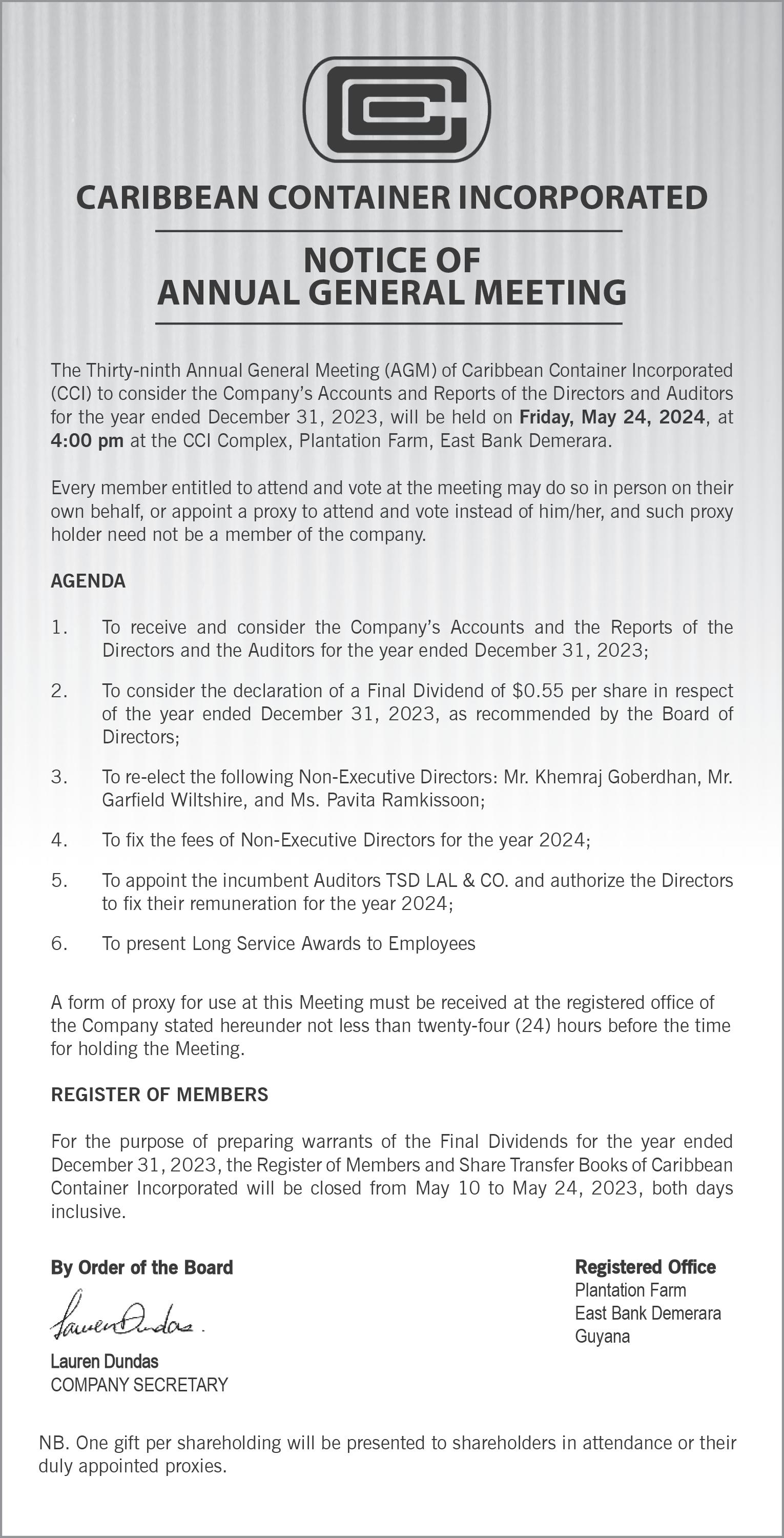

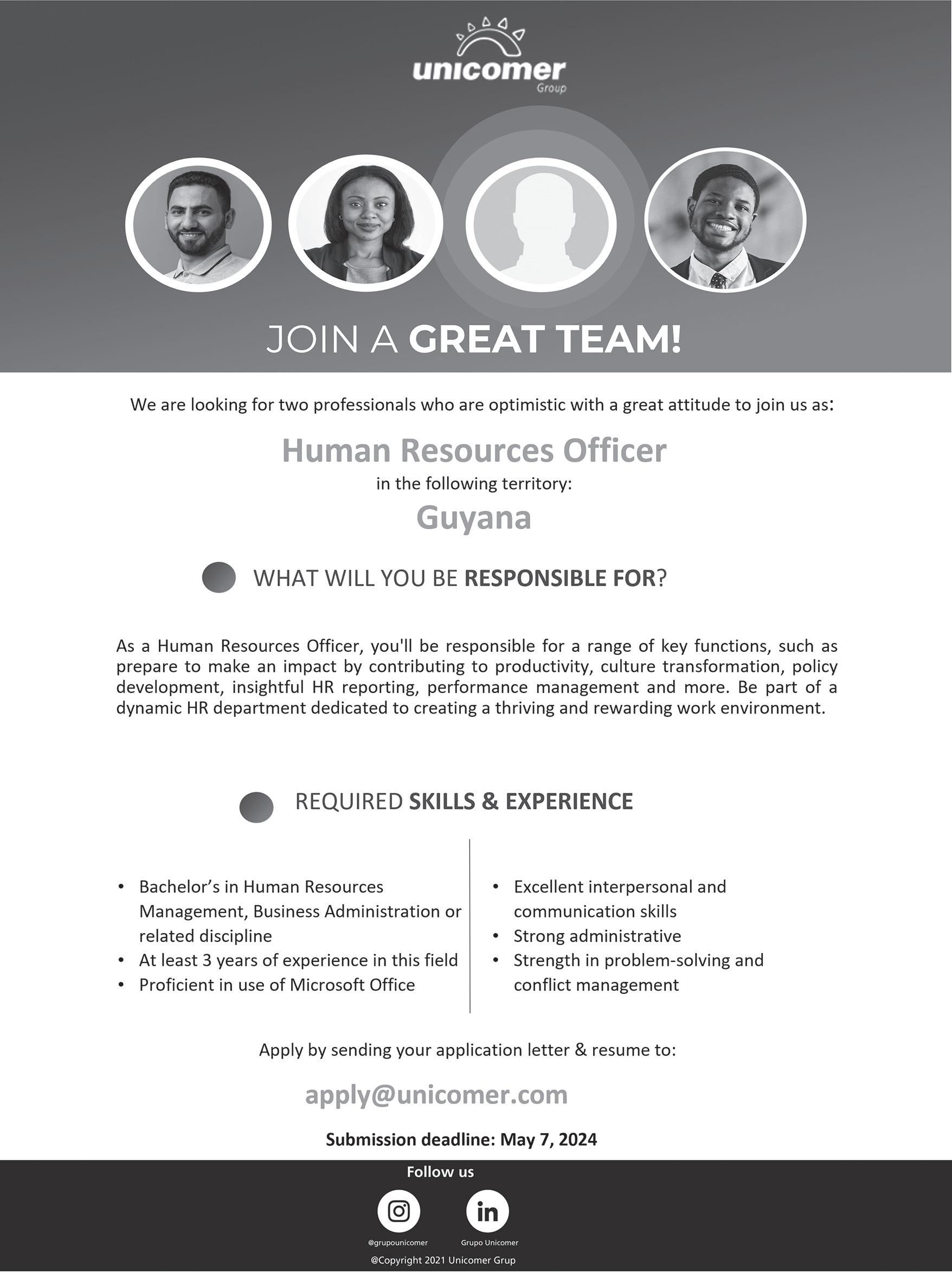
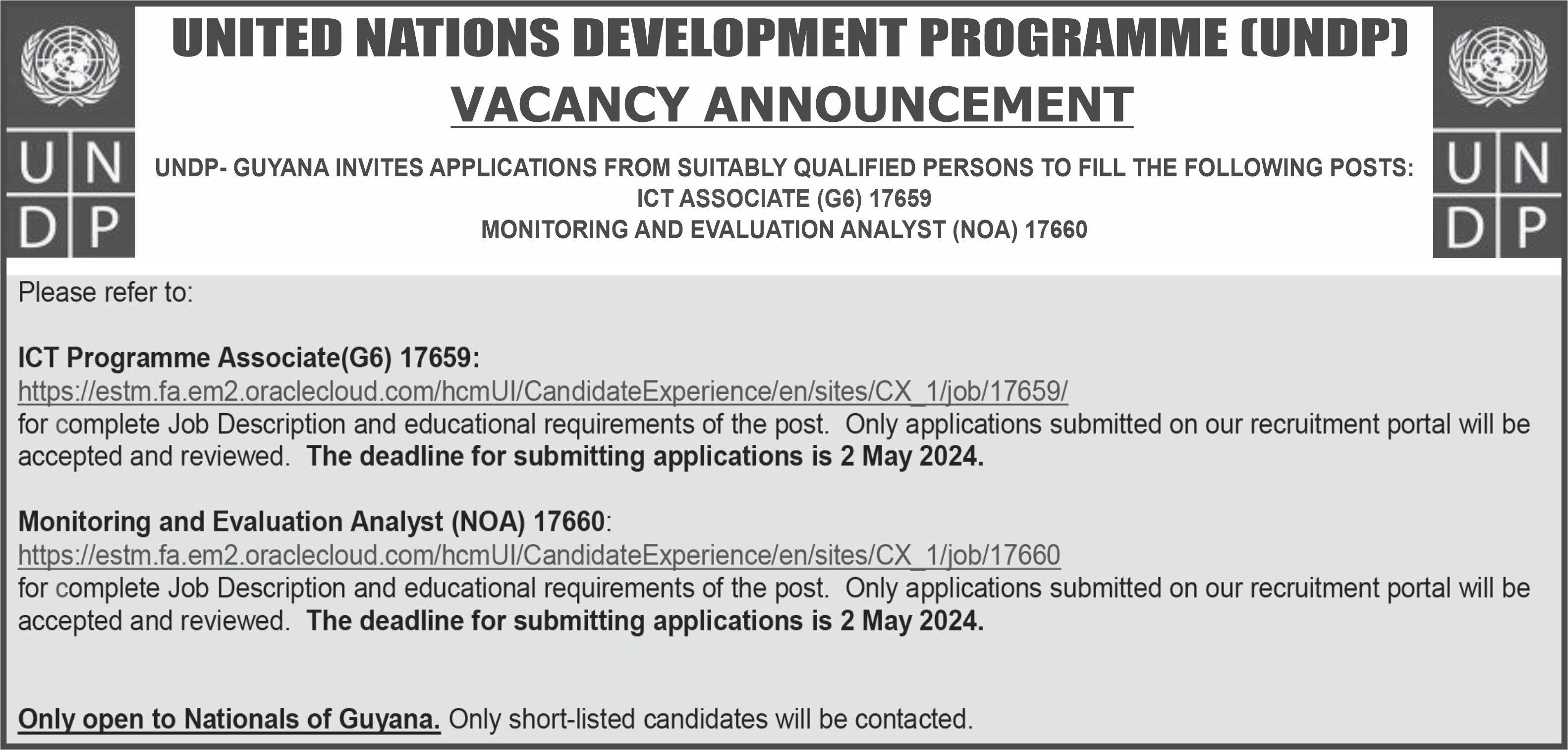





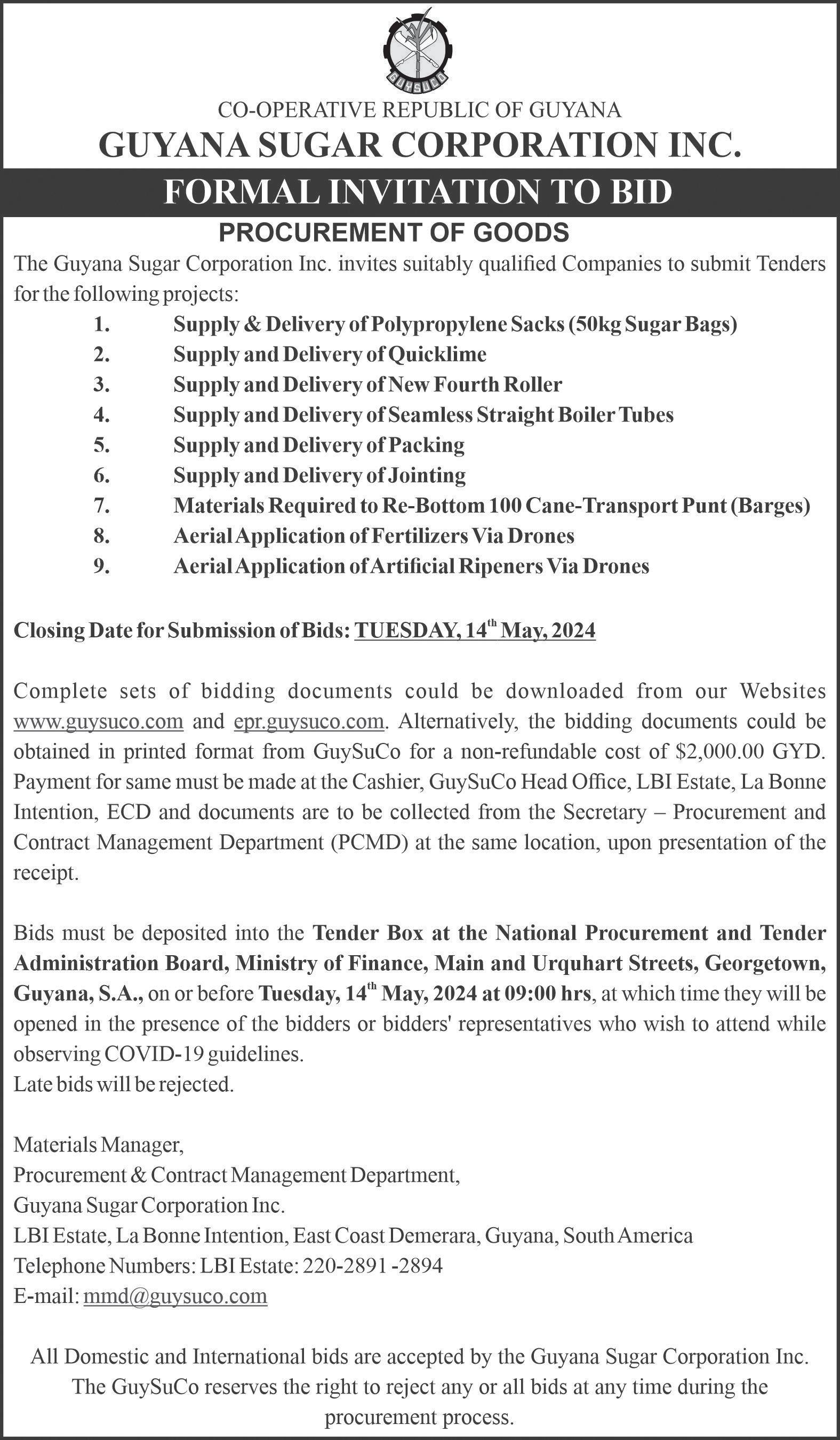

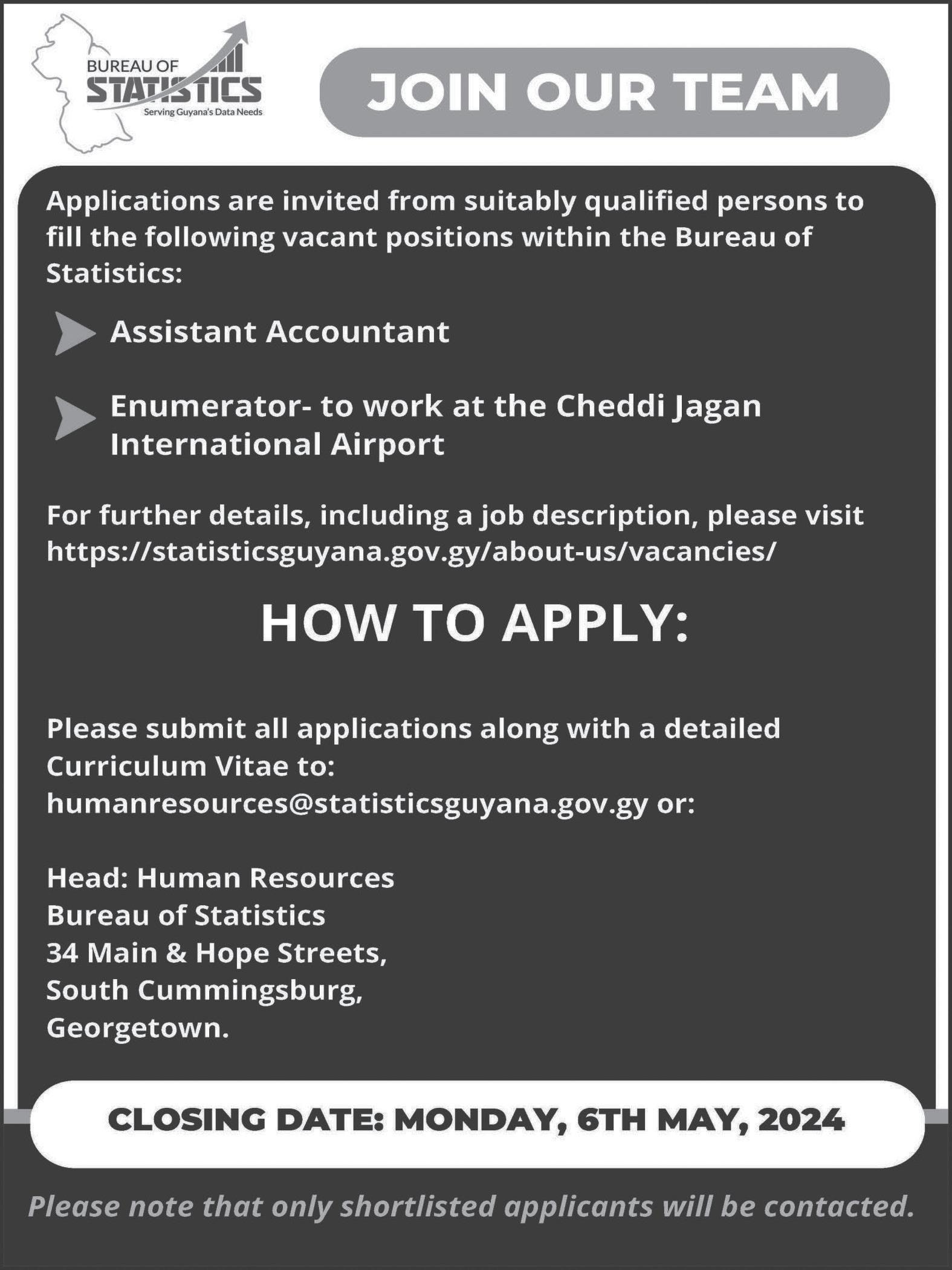
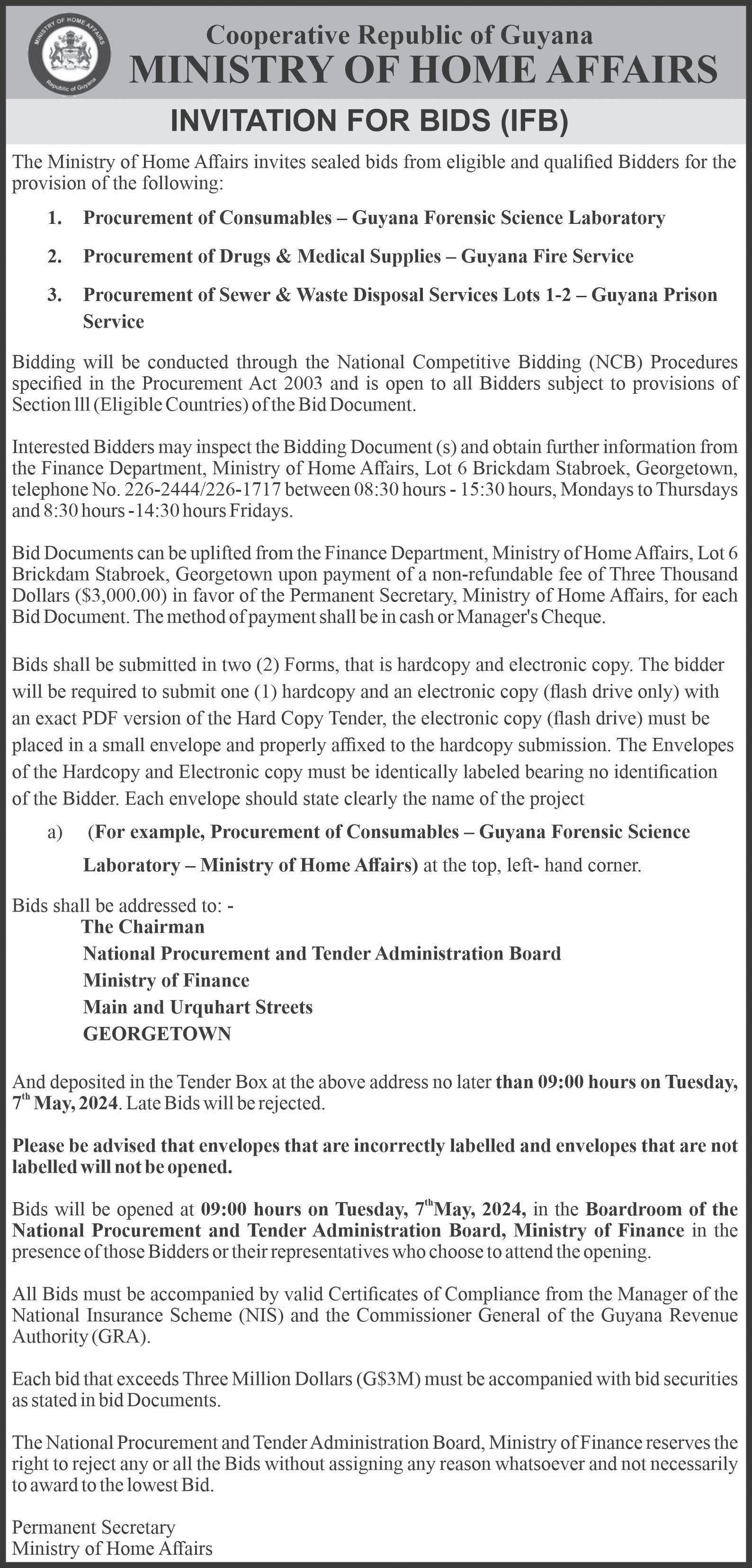
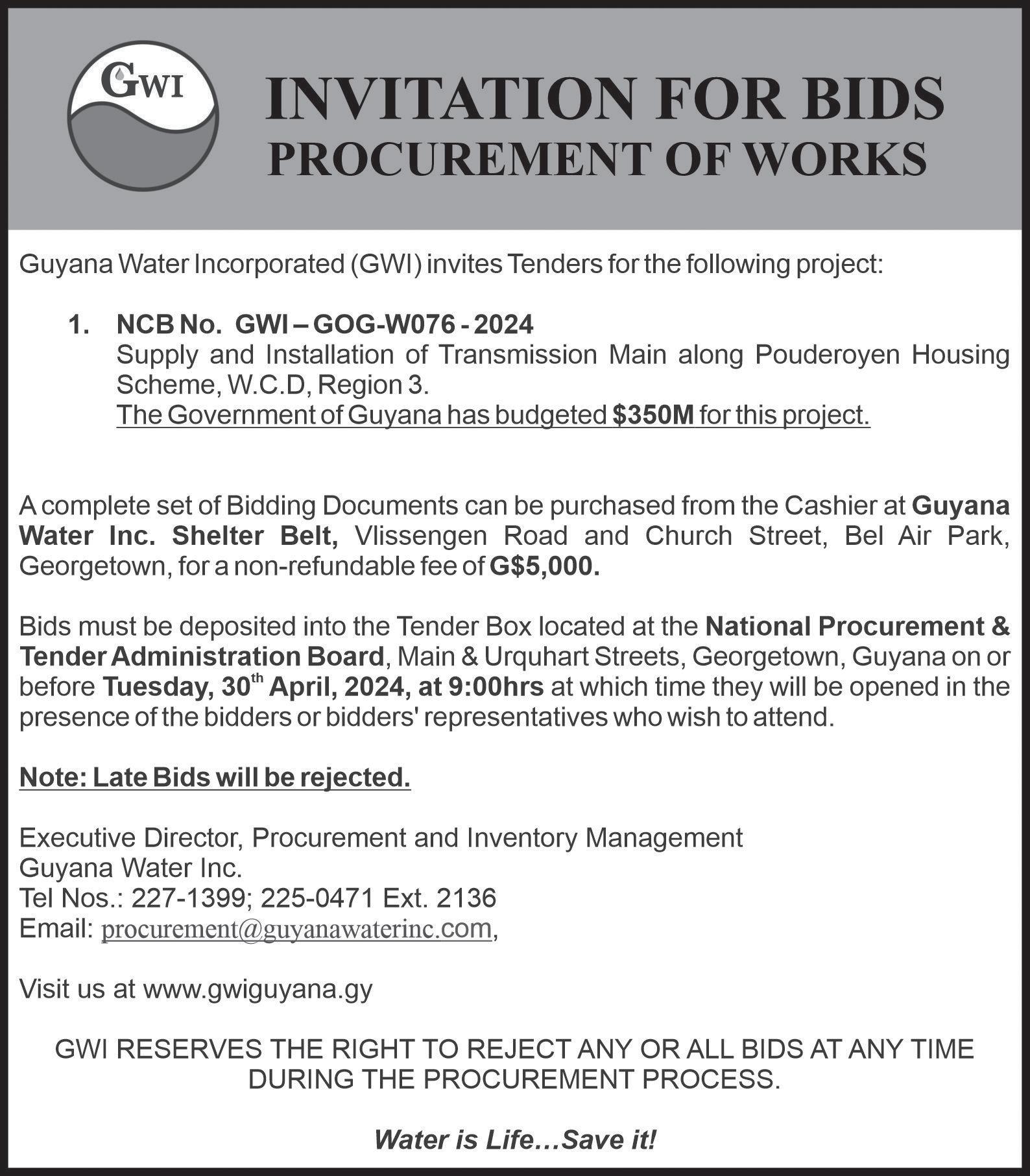
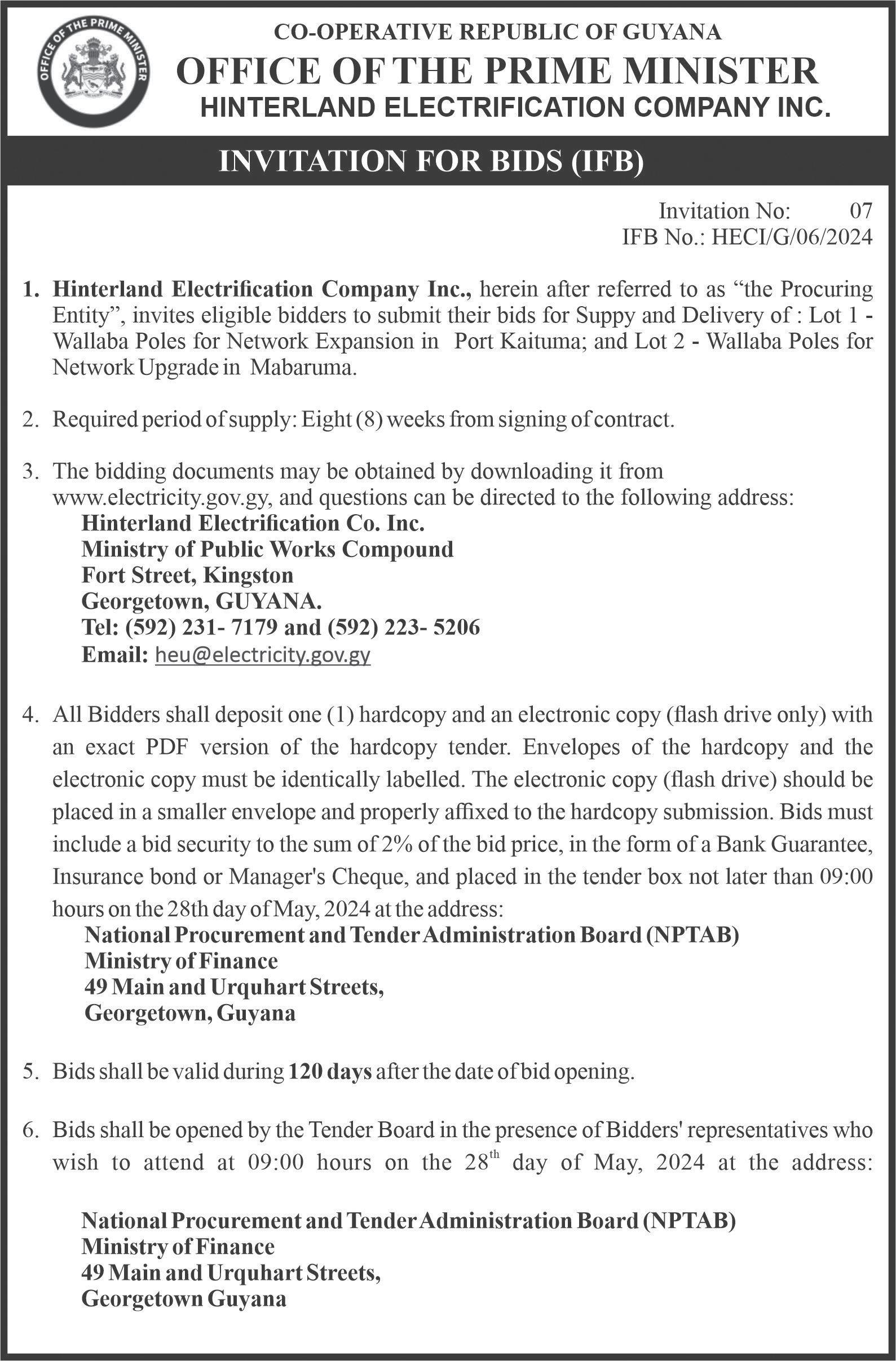



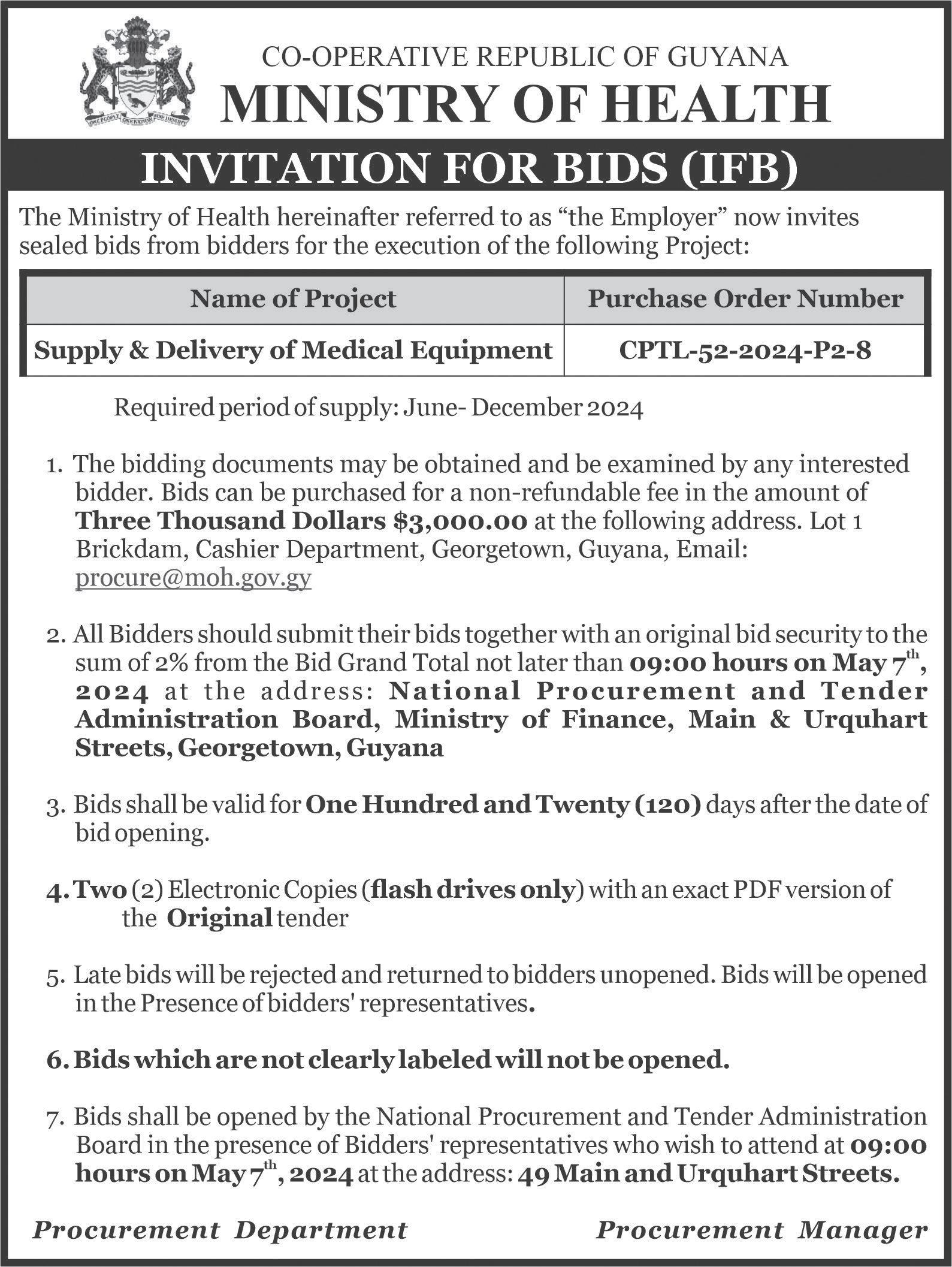


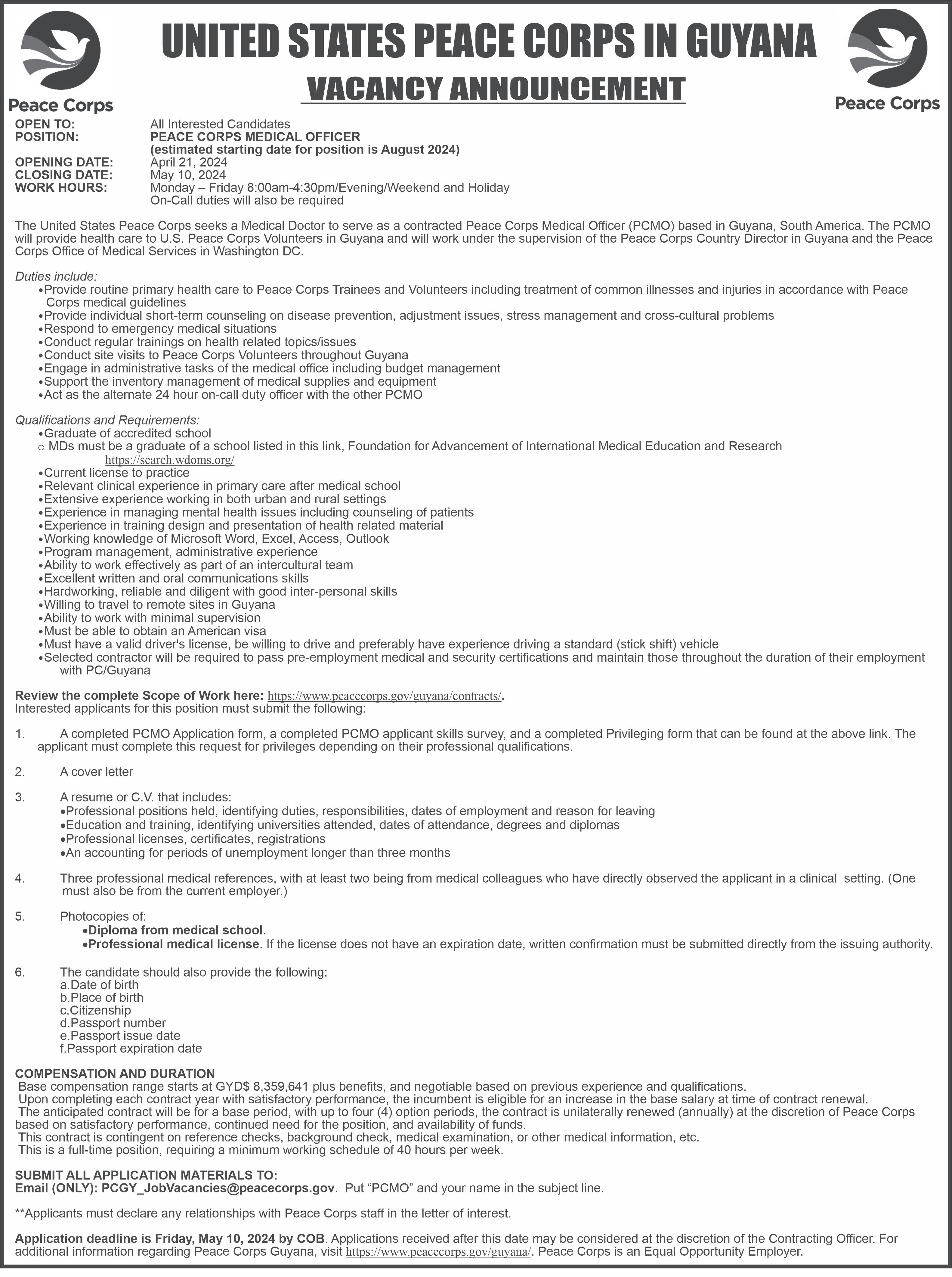

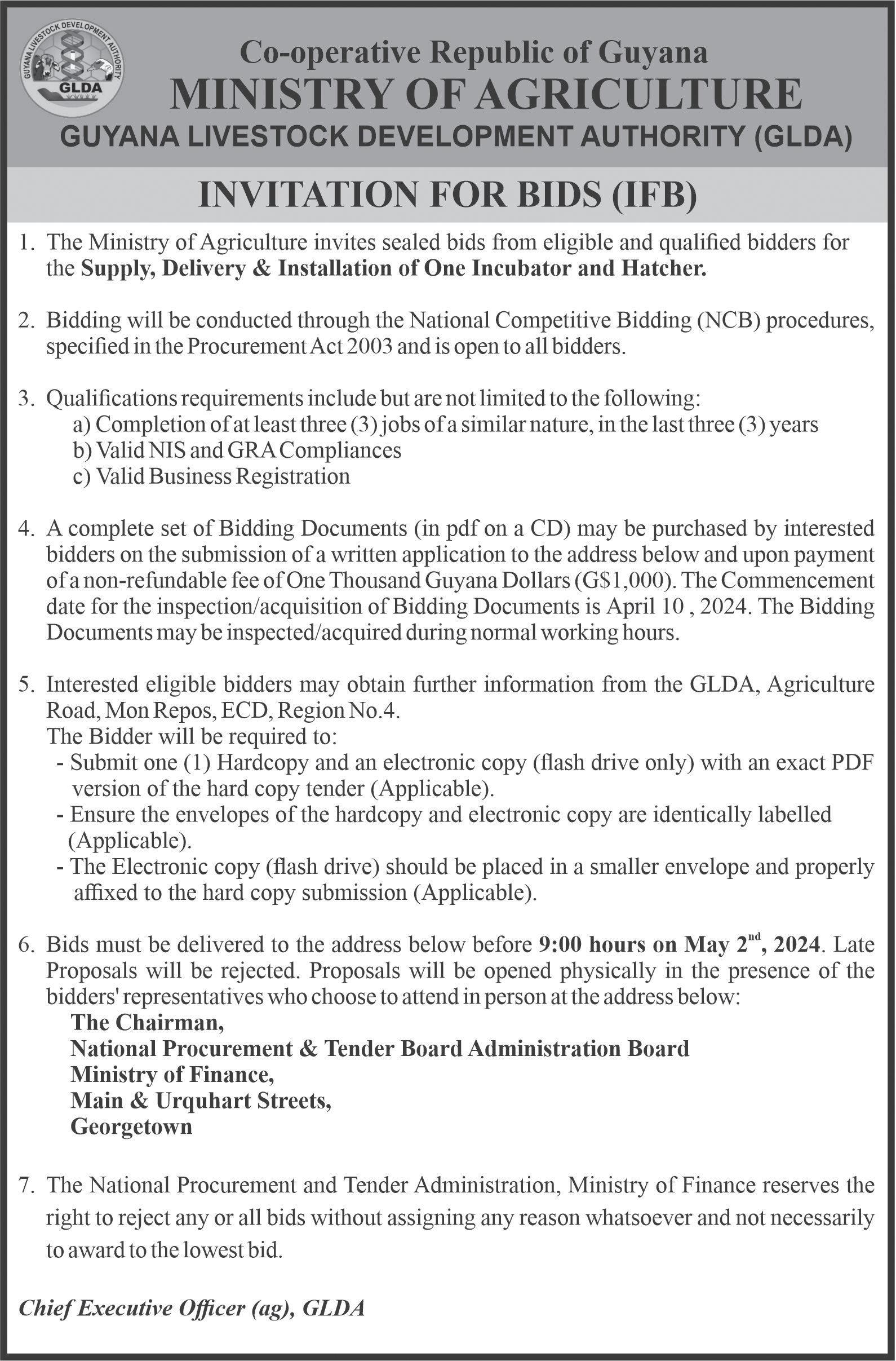

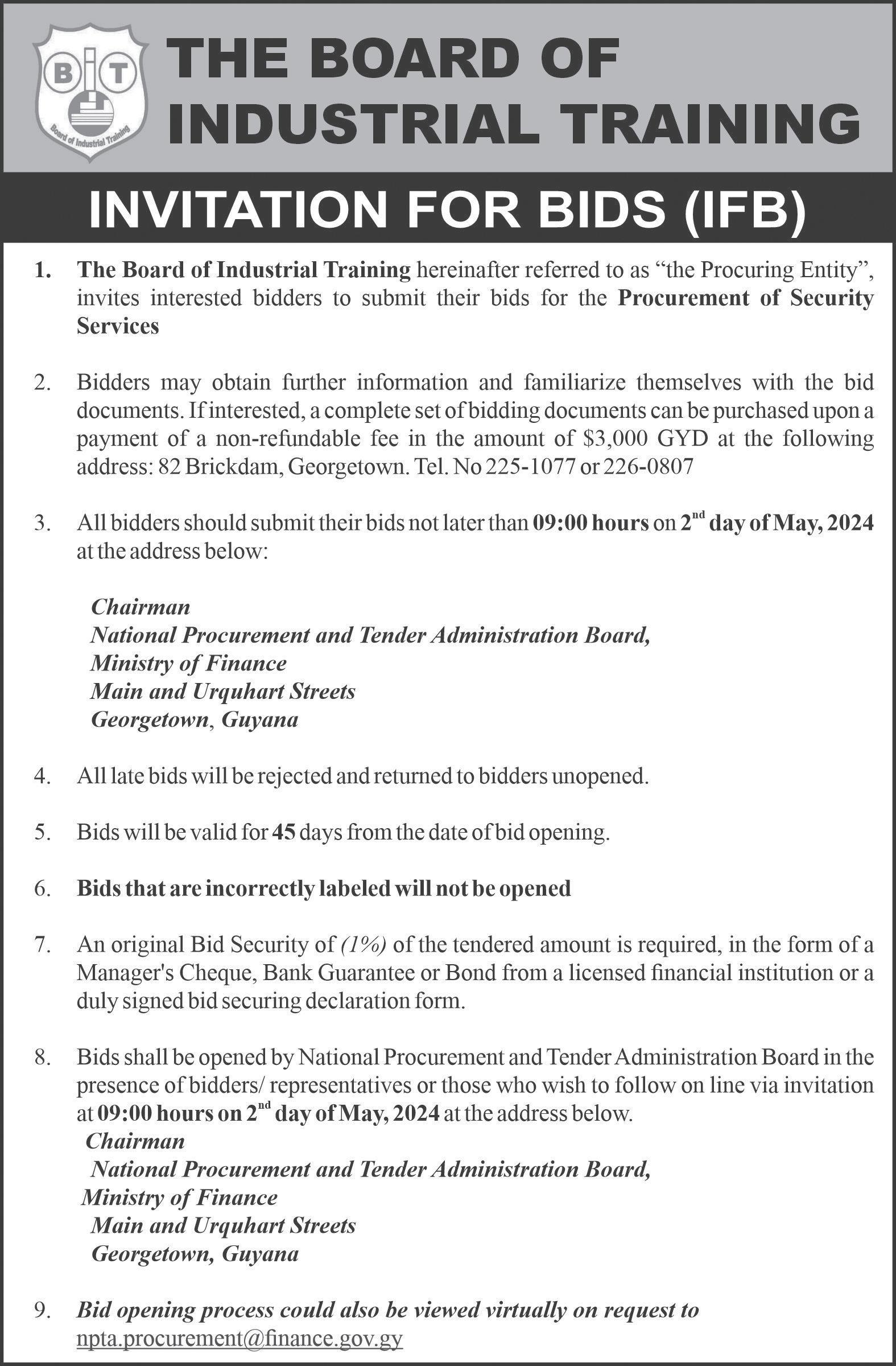
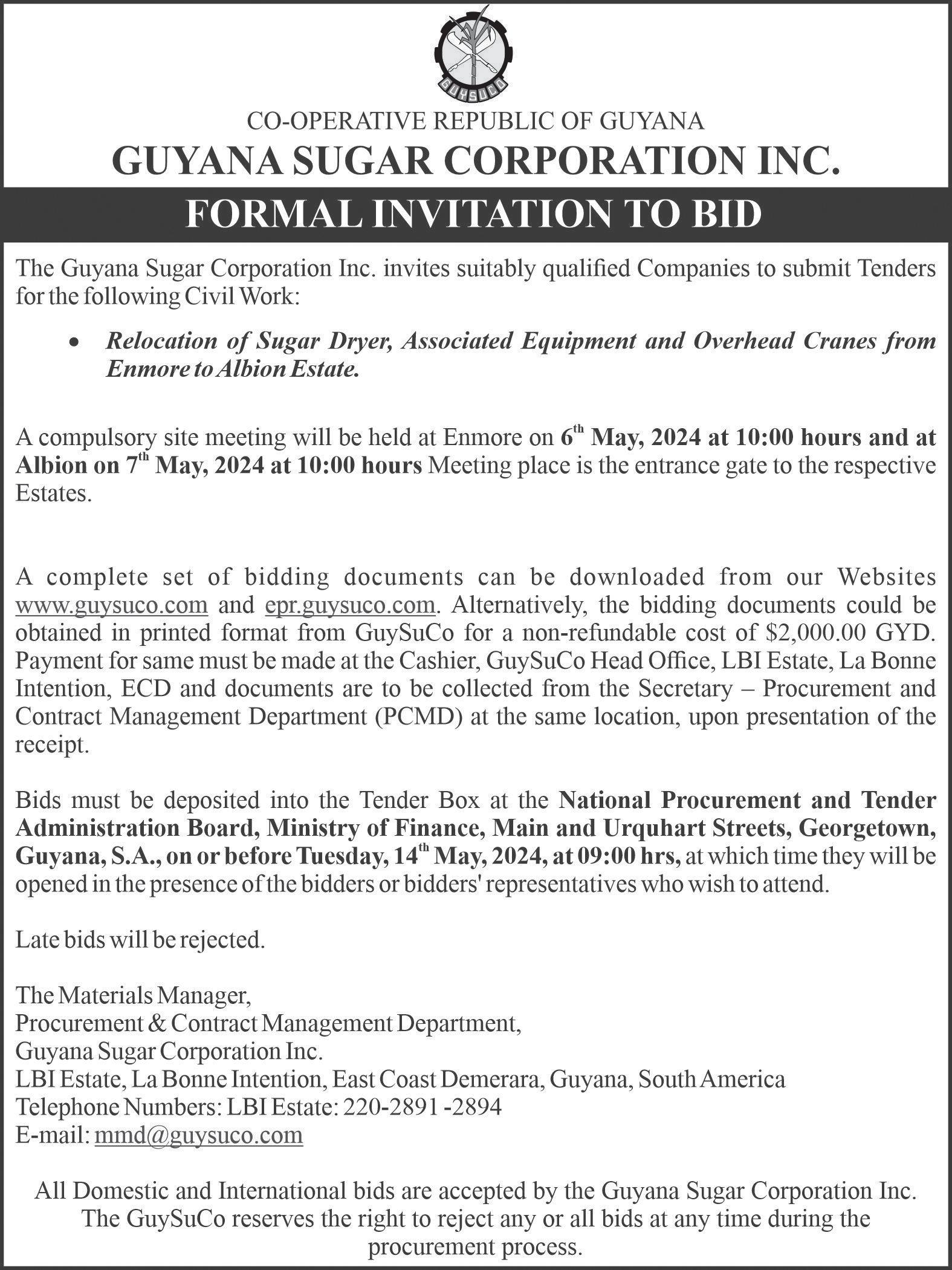






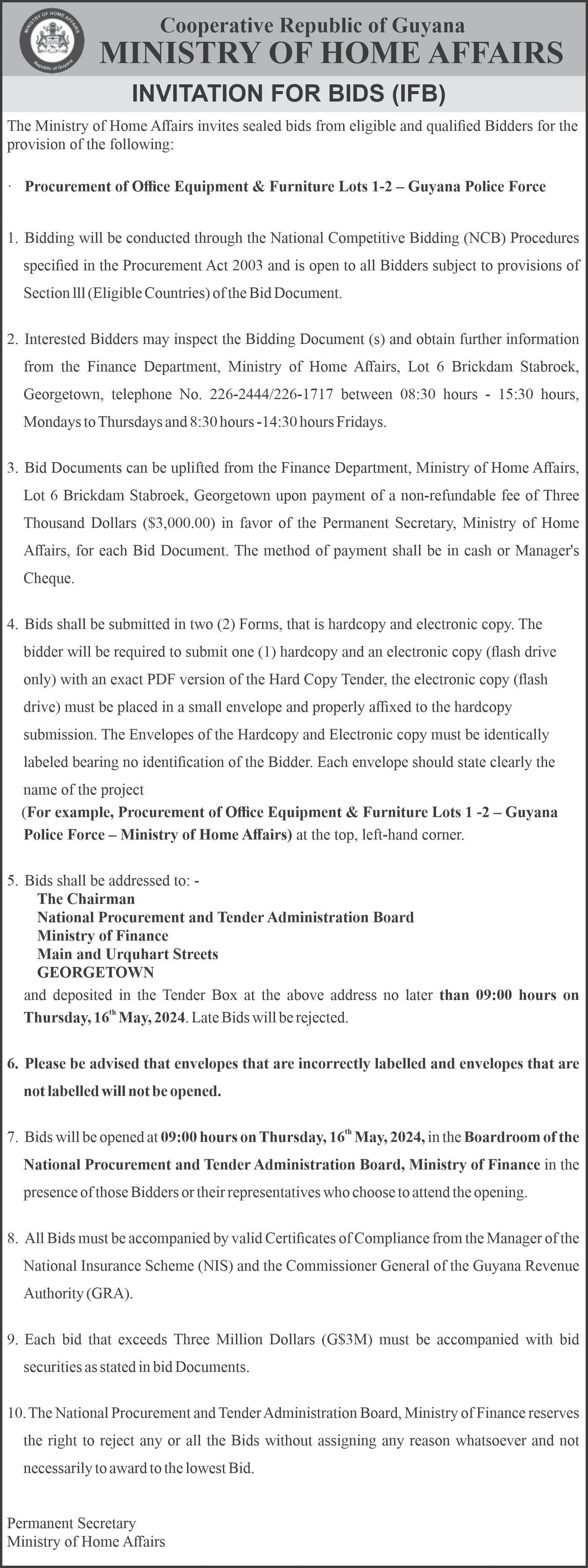
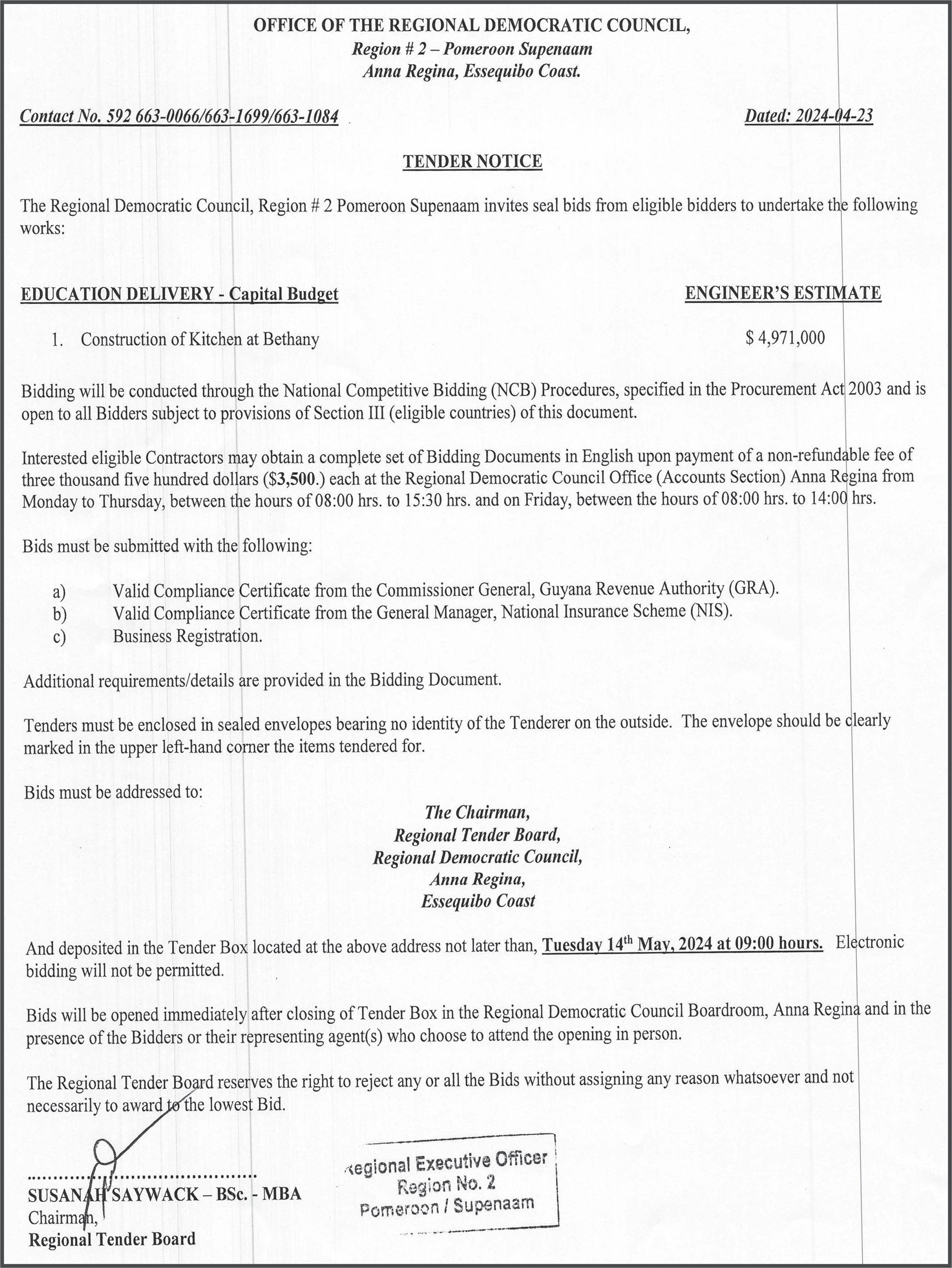
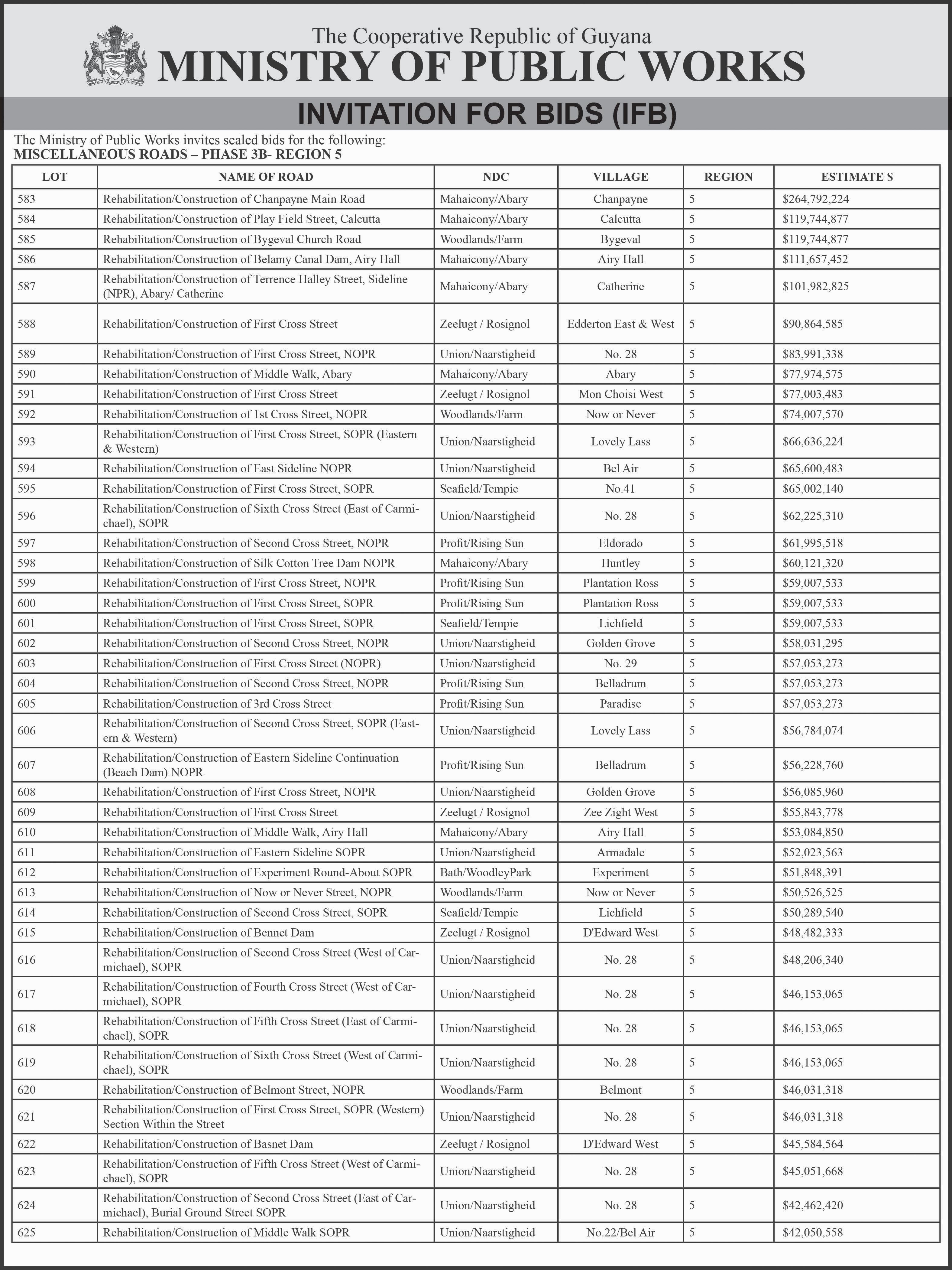
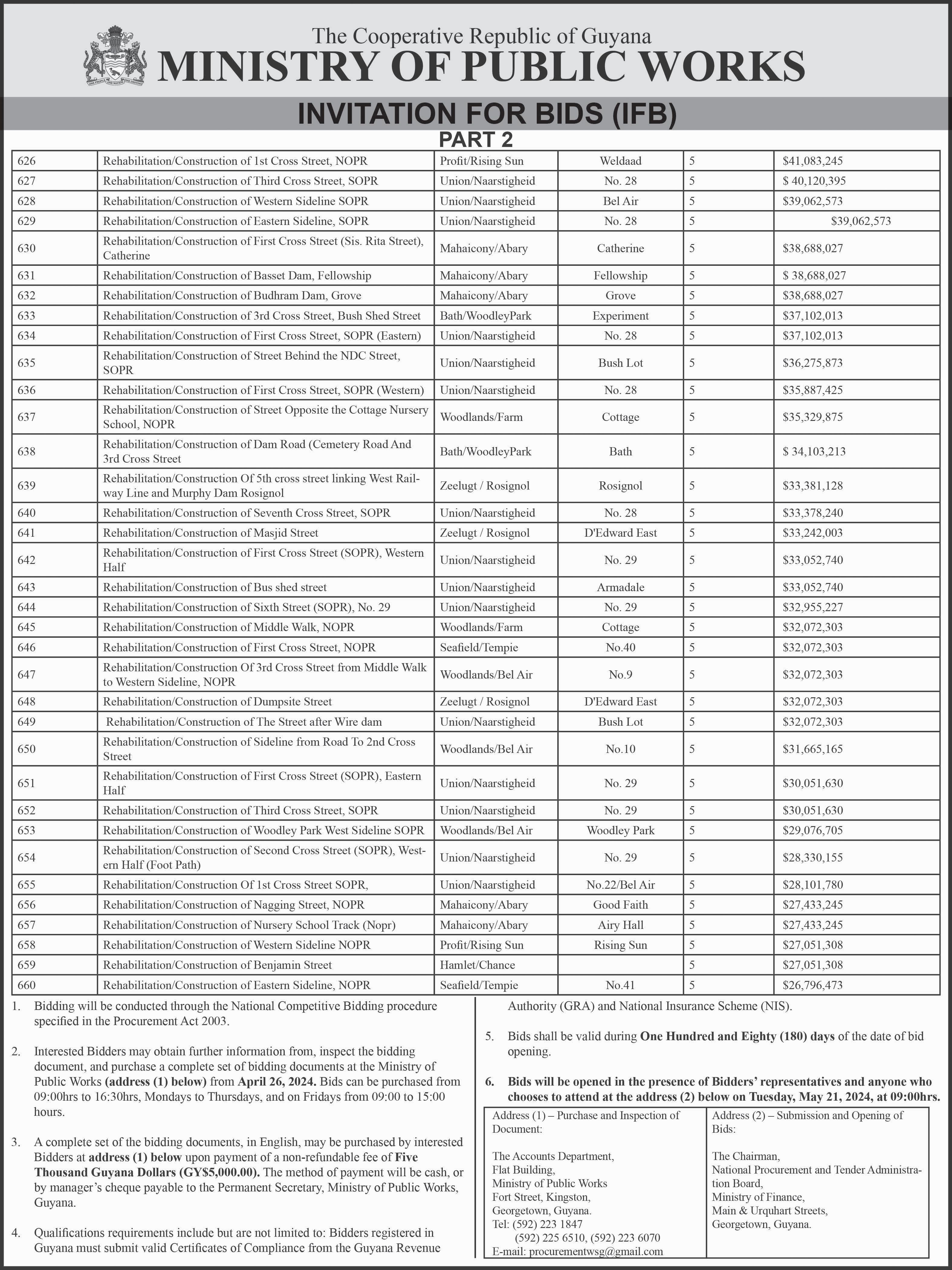
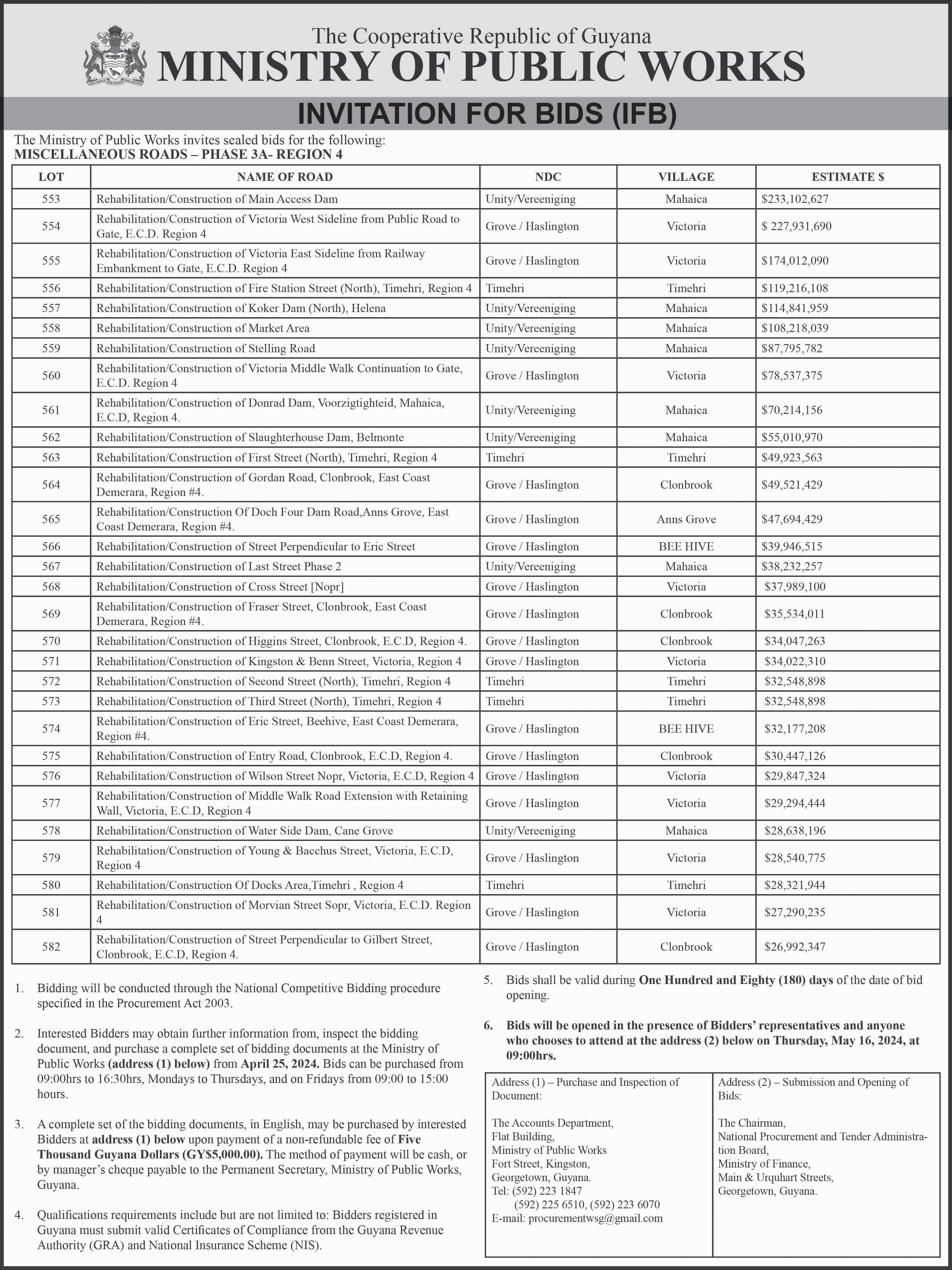


well done in the other.
First paragraph:
Cromwell, I charge thee, fling away ambition: By that sin fell the angels.
(1564-1616)SHAKESPEARE Henry VIII
Dear Student, Welcome dear friend. Sometimes you are asked to show understanding of the text by using the information contained in it to make decisions. When this is required, scanning becomes a useful reading skill to utilise. Aim first at a detailed understanding of the text by reading backward and

forward for details, couple it with your ability to make deductions and comparisons therein. Then, if need be, employ study-partner groups to justify and discuss your decisions. Be wise.
Love you.
Patterning: Revising classification (Continued)
Classification reminder: Details about items and ideas can be classified or placed in groups according to their common elements -- the features that they have in common.
Classification order: when details are arranged according to groups that have one or more common elements, a classification order is used which often depends on the writer’s purpose and main idea.
Comparing/Contrasting: details about items and ideas can be compared and contrasted in terms of the features that they have, or do not have, in common.
Compared details show how they are alike and how they are different in terms of their common features.
Contrasted details show only how they differ.
Patterning the paragraph: When you use a comparing/contrasting paragraph pattern, details are arranged in one or two ways: i) category by category or ii) feature by feature.
When you use the category-by-category treatment, and you need to deal with say, basketball, set off against volleyball, deal with all the features of the first category (basketball); then deal with all the features of the next category (volleyball). You may deal with these common elements or features in both categories of games such as:
i) activity type, ii) number of players,
iii) ball type, iv) size of court,
v) surface of court, and others if needed to be used.
This method is useful for both comparing/contrasting.
Signal words: of course, there are signal words and phrases used for comparing/contrasting. Some of these are:
although, however, likewise, otherwise, similarly, still, yet; and yet, by comparison, compared to (with), even so, except for, in the same way, much as, on the other hand.
Take a good look at the following comparison treatments of the two categories of games below. In one paragraph, the features and details related to the categories are correctly compared. This is not
Volleyball and football courts have features that are both alike and different. The surfaces of most indoor volleyball courts are made of wood, while the surfaces of most outdoor basketball courts are made of material such as asphalt or concrete. But the surfaces of most outdoor volleyball courts are made of asphalt and concrete too. A net is suspended across the centre of the volleyball court. Basketball courts have hard, level surfaces.
Second paragraph:
Volleyball and basketball courts have features that are both alike and different. The surface of both volleyball and basketball courts are level and hard. Indoor volleyball and basketball courts are similar too, in that both are made of material such as asphalt and concrete. However, the two courts are different in that a volleyball court is divided in half by a net, while a basketball court is clear from end to end.
Here, in these two descriptive paragraphs of comparison, features deal with similarities in the surfaces of courts – indoor courts/ outdoor courts. Differences deal with features centred on nets.
Can you say which paragraph is effectively written and so easier to read? What mars the other paragraph? Please tell your study partners.
A. Opposite meanings
Choose the word or phrase that is nearest to OPPOSITE in meaning to the underlined word or phrase.
1. The tourist brochure gave verbose accounts of the agricultural trade fairs of the last three years.
(A) concise (B) accurate (C) pleasing (D) expansive
2. We found her appreciative of the help that we had given to her on the matter of her lost kittens.
(A) displeased at (B) ungrateful for
(C) intolerant of (D) unhappy about
3. As a result of the need for trained staff, the firm had to dismiss several workers.
(A) employ (B) deploy (C) promote (D) discharge
4. The headgear worn by the factory workers is made from artificial material.
(A) synthetic (B) natural (C) man-made (D) factory-made
5. The old lady enjoyed making inspiring remarks to everyone she met.
(A) exciting (B) malicious (C) tricky (D) playful
2. Nearest meaning
The sentence is followed by four sentences. Choose the one NEAREST in meaning to the original sentence. Be sure to read all four choices before you select your answer.
If Mr. George plans to stay overnight in Bridgetown, his secretary will reserve a hotel room for him.
(A) Mr. George’s secretary will reserve a hotel room for him when he stays overnight in Bridgetown.
(B) Unless Mr. George plans to stay overnight in Bridgetown, his secretary will reserve a hotel room for him.
(C) Since Mr. George plans to stay overnight in Bridgetown, his secretary will reserve a hotel room for him.
(D) Mr. George’s secretary will reserve a hotel room for him should he plan to stay overnight in Bridgetown.
is left to “settle”. The tooth is checked at a later visit, and when all the infection has cleared, the tooth is permanently filled.
What will my tooth look like after treatment?
In the past, a root-filled tooth will often darken after treatment. However, with modern techniques, this does not usually happen. If any discolouration should occur, several treatments are available to restore the natural appearance.
What if the disease re-occurs?
Root Canal Treatment is usually very successful. However, if there should be a re-occurrence of infection, the treatment can be repeated.
Is it expensive?

Yes. Root canal treatment is generally among the more costly dental procedures due to the length of time required and the skill and material needed. It is, however, worth it when one considers that it’s the only way to save a tooth which is in very poor health.
What if I don’t have the treatment?
The alternative to RCT is the removal of the tooth. Once the pulp is destroyed, it can’t heal, and leaving an infected tooth in the mouth is not recommended. While some people would prefer an extraction, keeping as many natural teeth as possible is usually advisable.
Will the tooth be safe after treatment?
Yes. However, restoring the tooth with a crown is advisable to provide it with extra support, strength and natural appearance. Also, You should have your dentist regularly check it.


